



Something I have been so grateful for is my dad’s invitation for Tony and I to join him in a ten week long trap shoot in Troy. At first I wasn’t sure I wanted to do it. I used to be a really great shot, but these days loud, sudden noises have been stressing me out and I wasn’t sure I would fit in with my pink, furry coat. The truth is, I knew those were all excuses and I was proud as punch to celebrate my dad’s love language and head out there every Sunday. Little did I know that I would become rewarded with something sacred. Not just time with my dad but to revisit something so powerful from my past: the community table, or potluck.
Let me serve a slice of humble pie and share something with you I learned years ago that I remembered sitting with those fine assorted community members out at the gun club. My mom used to make this potluck dish called “Beans Bonanza.” I remember her being so joyful when she made it for us, only to discover that all of her daughters absolutely hated it, me especially. “Nooooo!” I’d proclaim when she would talk about it. But she wouldn’t be deterred by us! And thank goodness for that, because every chance she could, she’d make that dish. I remember we once drove it out to a Deary potluck, even though my mom couldn’t stay. It made her so happy and the compliments from others would rush in. We daughters might have hated it, but it was potluck gold to everyone else. “Debbie, can you make your special bean salad?” people would ask. Despite our pleas for brownies her face would light up and out would come the beans every time.
Years later I am inspired to think about this as I am always searching for ways within myself to become a more loving, accepting person. I put this to my own test as I volunteered to bring my fancy cucumber sandwiches to the potluck at the gun range. My dad gave me the look and laughed when I said what they were. I wasn’t sure anyone would like them but I went full retro Heather- complete with frilly toothpicks and crustless bread. You could tell they were a hit even though I got a couple of chuckles. It made me proud to see my fancy sandwiches mixed in with chili, casseroles, assorted desserts and what-not. One guy took a photo of my sandwiches and others said kind words to me! When I placed it at the end of the table, it really stuck out as different. But no ones dish was created to be part of a themed menu where all of the items played off each other. That’s just not a potluck. It’s supposed to be different. That’s the gift of it!
I was thinking about this in terms of acceptance for others. The truth is that people are like potlucks. Every one is different. Sometimes they don’t go together at all. But the point is to appreciate what’s on the table and celebrate the fact that you are invited to the party in the first place! If you think about it, all of the potluck etiquette can be related to how to treat each other. Assume the best in all dishes. Try everything with an open mind and an open heart. Find you just don’t like something? Say something kind and just focus on what you do like, no need to dwell on what you don’t. Always remember that there is a person behind that item who made it with love. You never want your cruelty to dim their light, especially when it’s absolutely possible for you to be more polite, kind and appreciative. You would only wish the same from them regarding your dish (you)! And if you truly don’t like something, maybe it’s possible you just haven’t refined your palate enough. Maybe it’s time to broaden your horizons! Doing so is never a bad thing and it only helps you grow.
I’m so grateful that my mother made her Beans Bonanza with a sparkle in her eye even though we didn’t like it, and that she taught me to always appreciate what others have to offer no matter what. I’m so glad she didn’t let us dim the light in her eye and continued making what she loved so much. I should mention that my mom was an incredible cook so we begged her for all of her classics- pink potato salad, brownies, cookies, you name it. But this one brought her the most joy. And I’m glad she never stopped making it, especially when her own daughters didn’t appreciate it.
I am so grateful that I live in a community where I believe we are all trying our best to be accepting and appreciate of each other, even though some days are better than others. I think the reward is in trying, even though it’s hard sometimes. In the season of summer, I hope you keep this lighthearted story of potlucks in your heart and practice these small lessons so you’ll be more loving for the big lessons. May we always encourage the light to shine in others- their individuality, their cultures and backgrounds. Their truth. If this life resembles anything, it sure resembles a potluck. May you sit at the community table with those who choose to see the best, be the best and inspire the best in everyone. And if nothing else, to just be kind and celebrate the fact that you were invited to the party of life in the first place.
Here’s to a warm, lovely summer season!
Love,


Editor-In-Chief Home&Harvest Magazine gg


Light The Reading Fire 8 Dutch Oven Cooking 14 Homemade Fresh Alfredo Pizza 20 Sara’s Chocolate Chip Cookies 22 Marble Loaf Cake 24 Sweet Strawberry Shortcake 26 Swirled Chocolate Banana Bread 28 A Reading For You 30 Buy Eggs & Buy Apples 34 The 2023 ELR Season Begins 40 The Age of Aquarius 46 Searching For Private Hicks 54 Backyard Beekeeping 62 Better 72 The Oh, Otis Shenanigans 76 CONTENTS
By Laura L. Morgan

Dear Reader,
Imagine: you are in a place surrounded by inky blackness, desperate for some light to push back the darkness and come alongside you as a companion, to comfort you and to illuminate your surroundings. You have a piece of flint and a steel striker and know how to start a fire. With the first few strikes, you create a spark that flares brightly for a precious moment, then fades to nothing. You persist in your efforts and eventually one of your sparks is strong enough to be placed in your nest of tinder where it catches the waiting material on fire. You gently breathe life into it, careful not to blow too hard and put it out while the flame is in its infancy. The flames reach out. They thrive. They burn with an intensity that creates heat and light. You add more fuel and soon you have a blazing fire. You have a comforting companion. You are not alone, and you can look around and see what was hidden by the veil of darkness.
“To learn to read is to light a fire; every syllable that is spelled out is a spark” (Victor Hugo). Hopefully, Dear Reader, you are of a mind that reading is an essential skill for success in life. Hopefully you also realize how much enjoyment it brings. Perhaps, however, you may wonder how to pass these skills and feelings along to your children and grandchildren. Perhaps you are not sure where to begin. Continue on, Dear Reader, and let’s explore some ideas on how to teach and encourage your children and grandchildren to be readers; how to ignite that spark that will illuminate their whole world.
Emilie Buchwald says that “Children are made readers on the laps of their parents.” The first step, if you aren’t already past this stage, is to start young. If you do have older children or grandchildren, don’t despair. It is still not too late. My youngest daughter was in third grade when she scored low on the Idaho Reading Indicator test. This surprised me because we are such a family of readers, and I’m an English teacher, for Pete’s sake. Needless to say, I was anxious to remedy that. I used some of these tips I will share, and I say this to encourage you so you don’t feel as if it’s too late, because it’s not. My daughter developed into a skilled and voracious reader, and yours can, too.
Thus, first of all, start young. I would read aloud to my babies. It doesn’t matter if it is fiction or non-fiction, just read and let them hear the cadence of your voice. Read with emphasis and fluctuation of rate, pitch, and tone. Hearing fluent reading is so important for language development. Snuggle up when reading with young children. Make a special reading spot: a couch or chair, on the floor with pillows, a corner of the room dedicated to such…wherever works. When my husband and I visit our grandkids in Alaska, we have our “reading deck” where we go to read aloud—if the insects aren’t too bad to be out there. Having that special place dedicated to reading shows the children it is important and makes a cozy place they look forward to visiting. All of these good feelings associated with reading help children to view it in a positive light.
Children’s books are replete with illustrations. Pause in your reading to talk about the pictures. Ask questions about what they see is going on, why the illustrator chose to draw that particular picture, who is each character, etc.
If you create reading rituals—setting a certain time and place, it helps you to remember to read together every day. Pick different types of books so they are exposed to a wide variety. If you both have a favorite, it’s perfectly acceptable to read it over and over again. My middle daughter loved Where the Wild Things Are by Maurice Sendak. As I read and re-read, I would point to the text. Before she could read, she felt like she could read, because I would continue to point to the text, and she had the lines memorized. Read the first part of the sentence and let them finish it. Feelings of success are so important when they’re young.
Light Reading Fire the

Dear Reader, don’t be afraid to read with different or silly voices for the characters. Have fun being a bit dramatic. Add hand motions where it fits. There is a line in Where the Wild Things Are that says, “…and showed their terrible claws.” You guessed it. Every time that line was read, we all made terrible claws with our fingers, sometimes accompanied by “terrible roars” and for sure accompanied by smiles and giggles. If your child or grandchild is older and you are just beginning this reading journey, it is still fun to make different voices for the various characters as you read.
Let your children or grandchildren hold the book and turn the pages while you read. There’s something beneficial about the tactile experience of holding a book. As the adult, you set the tone for reading time. Be excited about spending time together reading. Make it special, whatever their age. Make reading time a family activity. If everyone is involved, it makes it a fun habit, not a chore. There are also personalized books you can order online. One of my daughters got a book for each of her nieces. Their names were in the titles and throughout the story, they were the main characters. What a special gift! Those books are now dogeared.

Prominently display books around your house: on shelves, in baskets, or on a coffee table. I have a special section on one of my many bookshelves for children’s books. It is a lower shelf so the grandkids can know right where to go if they want to look at a book. Younger children may enjoy adopting a stuffed animal as a reading buddy. You can also encourage them to read to a pet. It is so adorable to watch and good experience for the child to practice his or her reading with inflection because they naturally want to do this for their pet. You will see them emulate how you read and realize again the importance of what you are doing.
Don’t forget to look at some wordless children’s books. They can be great discussion starters and also encourage your reader to make up the storyline. Of course, note areas of interest for your young reader. Just make sure to throw in a book that is not about, say, dinosaurs or sharks here and there so they get some variety. As kids get older, continue the read alouds. This is especially fun to do on road trips. Instead of slipping in a DVD or giving kids a device, have one person read (or, pass the book around to different readers—this is called popcorn reading—depending on the ages of your kids). It adds extra flavor when you read something that relates to your trip. We were finally going on our first “real” family vacation. We drove from Idaho to Colorado, via Utah, with planned stops along the way. One of the first places we headed to was Dinosaur National Monument in Jensen, Utah. We popped in an audiobook: Raptor, by Paul Zindel, as we marathon drove. Our three daughters loved that the story’s setting was in places we traveled through and where we were headed. It certainly made the possibility of an ancient raptor hiding in the dark recesses of a craggy cave seem deliciously terrifying and likely.
As your reader gets older, or if you are beginning when they are a little older, a great idea is to do projects or make recipes related to the books you read. When reading about the American Colonial period, we connected it to stories about our ancestors. Discovering the tales of our first Americans brought a new light and interest to the novels. We read novels like Blood on the River: Jamestown 1607 by Elisa Carbone and then did some projects. We made colonial sheep pull toys, created quilt squares from-



-construction paper, and even went so far as to gather acorns, roast them, grind them into flour, and make bread. (Side note: I would not recommend acorn flour bread. Blech! Not tasty.) We read I Am Regina by Sally M. Keehn about a girl captured during the conflicts of the French and Indian war, then we wove Native American-style baskets. Take a field trip. After reading the Nez Perce tales Heart of the Monster and Ant and Yellowjacket, we went and visited those sites. We are lucky enough to live close to these historic places. We also attended an amazing Nez Perce pow-wow. These connections make the stories come alive. Be creative. At the end of both of my novels I have written, I include a recipe from the story. Many readers have told me they made the recipes and how much they liked them. These story-based projects help keep reading fun, which is important. Please do not make reading a part of punishment for your child. They will develop negative feelings toward the activity. If you are forcing them to read, but don’t have the time to do it yourself, you’ll send negative and mixed messages. Yes, Dear Reader, parenting takes time and intentionality. You can do it!
Making a reading chart to see how many books have been read is a good incentive for some households. Allowing the young readers to work toward a reward or prize may also have merit. I would caution you to be careful about what the reward would be. Perhaps a trip to the bookstore to pick out a new book would be a good choice.
A great strategy for middle or young adult readers is to have then make up their own stories. I purchased a ceramic elf house with a door that opened to a miniature sitting room housing a mushroom table and placed it in a depression at the base of a giant cedar tree. I guided four of my grandkids to “discover” it. Each child got to create his or her own character, and then they took turns making up parts of the story. I wrote it down, then typed it into a book with blank areas on top of the text where they drew illustrations. We read the book over and over, proudly sharing it with their parents. This is a great way to build excitement for reading—make them authors!

As you read together, teach reading skills and strategies in a natural manner. When it is a suspenseful part of the story, slow your pace or pause for effect. It’s helpful to say things like, “Did you see how I paused right there? The author uses these three dots in a row, called an ellipsis. They tell me I should pause.” Or say things like, “I’m not sure what this word means. First I’m going to look at the other words around it in the sentence and see if they give me clues. I can also see if I know what a part of the word means.” Practice skills by asking them comprehension questions. Have them predict what will happen next, then ask them why they think that. Read a line that infers something without coming right out and telling it. “Wow. It describes him as having a red face and clenched hands. What is this showing? Yes, he was angry. What in the story makes you think he was angry?” When strategies are taught in a natural, organic way, they are quite effective and more palatable for emerging readers. I could go on and on, but here are a few more ideas. Make or buy a special bookmark, get a cute reading light they can clip onto their book, write a letter or an email to the author, write book reviews, go to the school book fairs. Just have fun with books! One important thing to remember is that every child is different. Be patient, encourage instead of pressure, praise attempts at sounding out words even if they make mistakes. Remember, Dear Reader, you are there to build a fire, to create the spark that ignites a lifelong love of reading, to nurture it into a blazing reading inferno that cannot be quenched.


Keep your home beautiful, safe, and comfortable! REPAIRS UPGRADES INSTALLS Cheetah Electric is here for all your home electrical needs. Call us today! 208-883-1099


Dutch
Oven
cooking under the stars

Welcome back my faithful readers and lovers of all things grilling, barbequing, and those who share my fascination of cooking outside over open flames! I hope that as the spring is rewarding you all with excellent weather, longer and longer evenings to enjoy the daylight hours and gather near the grill, you have been finding yourself coming out of that winter hybernation and enjoying even more of your favorite foods.
If you have been reading along with the previous issues, you know that for my birthday last year Heather got me something that I have been coveting for a very long while - a Dutch Oven! And in fact, she didn’t get get me just any one, but rather a vintage model that has been lovingly restored and is now enjoying its second life - most likely at least 100 years after it was first made - and providing yet another family with amazing food. My model is cast iron, and while I have heard wonderful things about the enameled ones that look so colorful and cute, and can be said to cook just as well, I’m very happy with her choice to get me a good-old cast iron beauty.
The reason, which should be obvious to anyone that know my love cooking on flame is that only the non-painted cast iron types can survive the rigors of sitting on top of your grill just over a bed of coals, or even out at camp, dropped directly into the fire pit.
So for the 2023 series of articles, I decided to take you on a journey with me in discovering all a Dutch Oven can do. And with the weather permitting, and woods calling our names, I decided to take this little class outdoors!
Okay campers, get your tents or campers ready, grab your Dutch Oven, and follow me to the fire. Today I’m going to share with you one of the most amazing, and easy to pull off camping tricks using only a Dutch Oven, a cooler, one bowl, and open flame. And before we get started, go ahead and say a quick thank you to founding father, midnight rider, inventive silversmith, -
-Boston native, and avid Dutch Oven cook – Paul Revere. Yep, we owe him a debt bigger than lanterns in towers and warnings of a British approach. Keep reading and you’ll find out why these two recipes only work because of a little ingenuity from one of America’s favorite patriots.


The technique on both recipes is very similar – we will be essentially baking over the top of a liquid. I mean, you could spend tons of extra time baking separately, and then re-warming over the side of the coals when the main dish is done, but trust me –in addition to being much more efficient, it’s a lot more fun to do it all at once!
The best part is that the prep is almost all done at home. For both our incredible dinner, and gourmet breakfast the following morning, we will have everything already cleaned, cut, portioned, and bagged in sealable freezer bags that can hang out in the cooler until just a few minutes before you are ready to cook. All you need to do is pour them into the Dutch Oven in the correct order and get it on the heat. You might want to send your family off for a quick hike or birdwatching though, otherwise you won’t be able to pretend that you were working as hard as they will expect when everybody sits down to taste your culinary masterpiece.
So lets start on that first night. Get the fire going, and make sure to work up some really strong coals. We are about to make chili and cornbread. Now that’s luxury camping!
One option here is to cook the chili over the fire right there in camp before you add the cornbread mix to the top. This does take a little extra time, but when you pop the lid everyone gets that hit of amazing aroma, and will be twice as excited for dinner. The other option is to use your favorite pre-made chili or to even cook and then cool the chili at home. Either way, we want either the finished chili or the pre-mixed but uncooked portion ready to go in our freezer bag so there is as little prep work at the camp as possible. For you first run, if cooking the chili on site, try vegetarian just to keep it simple, and as you get confidence, move up in complexity from there. I have a quick recipe below that’s easy for a first time, and sure to please. If you do opt for pre-made, just start the cornbread at the same time. It should finish cooking at about the same time as the chili below begins to bubble and get heated enough.
For simple, on-site cooking, just dump a 16 oz jar of salsa, 3 of your favorite 15 oz cans of beans (or a mix of kidney and black), 1 can of corn, and 1 can of fire-roasted tomatoes into a bowl, and mix with 3 tbs of chili powder, and a good pinch of salt. Stir it up and bag it at home, then dump it into the pot once the coals are ready. For the corn bread, have all the dry ingredients from your box mixed at home and bagged, then mix with your separate wet ingredients. You can drop large dollops on top of the chili or spread it out evenly depending on how thick you want it at the end. Get the pot in the center of some coals, and shovel a few across the top, cooking for about 20-25 minutes. At this point it should be ready, so go ahead and carefully lift the lid to check that the cornbread is cooked.
Okay, as we pull off the lid, take just a second here to notice that unless your Dutch Oven is hundreds of years old, there is a handy little raised ring along the outside of the lid. As we lift up, the coals say in place and don’t fall off the outside edge of the lid into the food. Its easy management for the upper cooking fuel and all the ash that it produces. Remember when I told you to thank Paul Revere? Yep, that ingenious coal and ash guard was his design. Old Paulie was quite the griller and chiller but hated soot in his baked beans. And those legs on the bottom, legend-



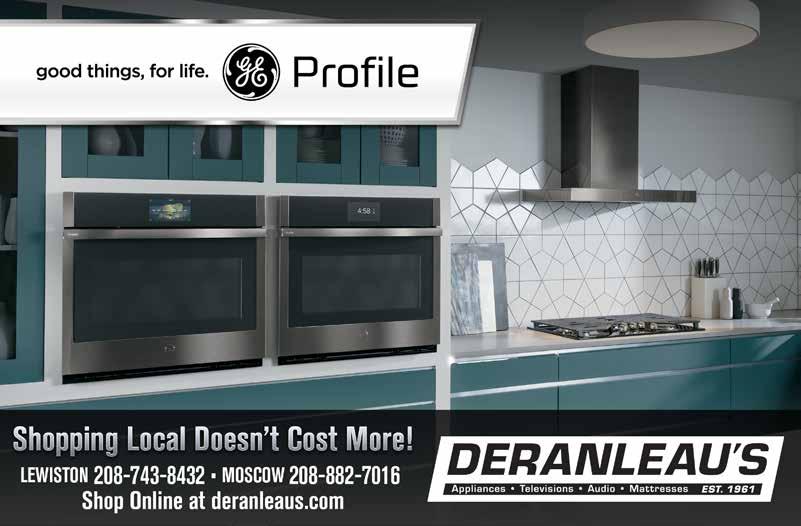
-has it that Mr. Revere is responsible for those too. Available on some outdoor focused versions, the three or four short legs let the vessel stand above a more uneven bed of charcoal and not wobble even as the coals beneath begin to burn out and crumble to ash. So to add a little patriotic flare to your camping excursion this July, remember to give a quick nod of respect to the founding father who was a great grill-master to boot. Go ahead and have a beer in honor of the hardworking and creative smithing of Paul Revere (just remember to have one if camping by land, but two if you are camping by the sea).
With the lid off, we should now be staring down and seeing happy little dumplings of cornbread afloat on the hearty chili below, or if you opted for full coverage it will look like a perfect shepherd’s pie. Go ahead and pull it off the heat, close the lid again, and let it rest for at least 10 minutes.
After you’ve served it up and allowed the pot to cool a little remember to give it a good wipe with the clean towel you have handy so it stays well seasoned and is ready for service early the next day.

Enjoy the stars, your favorite people, and go ahead and turn in a little early. Camping always takes it out of you, and besides, you’ll be really looking forward to the breakfast in the morning. Roll out of bed the next day and get the fire started again quickly. This will give you time to brew some much-needed coffee while you work up the coals needed to cook breakfast. Now, when we are camping, Heather has a favorite joke that starts most days, and that is “If you aren’t waking up and brushing your teeth with a hotdog cooked over the fire, then you aren’t really camping.” I always laugh, but I prefer a more refined midwoods experience to start my day. And the fact that you are out in nature is absolutely no reason that you can’t have all the comforts of home or your favorite restaurant by way of a well cooked breakfast. The camp fire really is just a slightly more primitive version of the grill you use at home, and should be regarded as a perfectly serviceable kitchen. So lets get that first sip of coffee, and while the coals are getting ready we’ll pull out the trusty Dutch Oven again and get it loaded up with all the fixins for a hearty breakfast, without any extra work. Just like the chili, this can all be pre-bagged so you are ready to go at camp. Get the oven on top of a good bed of coals, and mix in two 1 lb packages of ground breakfast sausage. Stir it around as it fully browns, and then take it off the heat for a minute. Cover the sausage with 2 lbs of frozen shredded potatoes or bagged hashbrowns, and then evenly spread 12 eggs on that layer. Hit the top with some salt and pepper. Next, sprinkle on ½ lb of shredded cheese – cheddar is the standard for a reason, and always a solid choice, but I like to experiment here. And for the final topping, just use one can of biscuit dough, spreading them evenly around the outside and then into the center. Try to leave a little room for them to puff up!
Now get that lid back on, and transfer back to the bed of coals. Again, shoveling some on top to cover the lid. Cook for 40-45 minutes. Make sure that you re-apply some fresh coals if you see them starting to dull. Check the top to see that the biscuits are cooked, thank Paul one more time for that lid hack, and call the family to the table. This feast will only need a few minutes to rest, but the smell will make it hard to wait even that long. Both of these should be pretty easy to try – even out on a fire in the woods. Go ahead and experiment and add a little of your own flavor. And remember – try to act like it was all hard work. No one needs to know how quick you threw it all together. Go on and take those compliments. You deserve them!

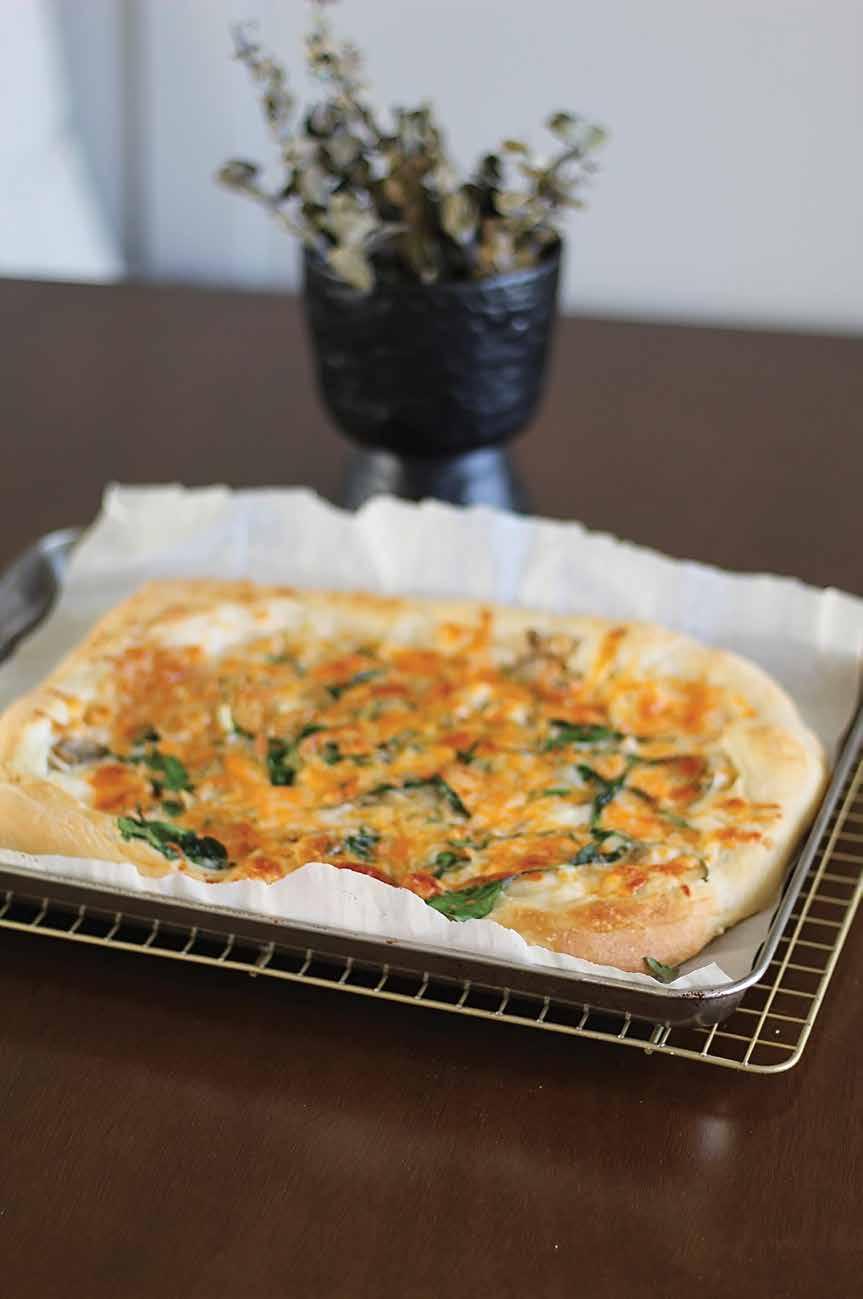
HOMEMADE fresh alfredo pizza
INGREDIENTS
(For the dough)
2 tsp active dry yeast
1 tsp granulated sugar
3/4 cup warm water
1/2 tsp salt
1 tbsp oil, any kind (plus more to grease)
2 cups all-purpose flour
(For the toppings)
1/2 cup Alfredo sauce
1/2 cup mushrooms, sliced
1/2 cup yellow or white onions, diced
Pinch of salt
Dash of pepper
1/2 cup spinach
Protein, optional
2 cups grated cheese, any kind
STEPS
1. Preheat oven to 450°F. Put yeast, sugar, and warm water into a bowl. Cover and let rest for 10 minutes until mixture bubbles.
2. Next add salt, oil, and flour 1/2 cup at a time. (The 2 cups is an approximate value.) Form into a ball of dough that no longer sticks to the bowl. Transfer onto a floured surface and continue to knead for a few minutes. Then put back into a greased bowl, cover, and let rise for 5 minutes.
3. Remove dough and transfer onto a pizza pan or cookie sheet (not non-stick) covered in parchment paper. Roll out with a rolling pin and then your hands until even and smooth, conforming it to the size of the pan/sheet.
4. Spread Alfredo sauce onto the dough, leaving the crust bare. Next add the mushrooms, onions, salt, pepper, and spinach. (Protein such as chicken or shrimp would be an added bonus, but not necessary!) Lastly, add the cheese of your choice.
5. Make sure that everything has been evenly distributed over the pizza. Put in oven and bake for roughly 12 minutes or until undersize is a nice golden brown. You may need to adjust the time/temperature slightly depending on your oven. Finally, remove and enjoy your perfect summertime pizza!
emory ann kurysh
KITCHEN
Home&Harvest | May/June 2023 21

SARA’S
CHOCOLATE CHIP COOKIES

zkitchen sara raquet
INGREDIENTS
1 cup butter, room temperature
3/4 cup sugar
3/4 cup brown sugar, packed
2 eggs, large, room temperature
2 teaspoons vanilla
2 1/4 cups flour
1 teaspoon baking soda
1/2 teaspoon salt
½ teaspoon cinnamon
2 1/2 cups chocolate chips
STEPS
Stir flour with baking soda and salt; set aside. In large mixing bowl, beat butter with sugar and brown sugar at medium speed until creamy and lightened in color. Add eggs and vanilla, one at a time. Mix on low speed until incorporated. Gradually blend dry mixture into creamed mixture. Stir in chocolate chips. Drop by tablespoon onto ungreased cookie sheets. Bake for 9 to 11 minutes or until chocolate chip cookies are golden brown.

loaf cake
INGREDIENTS
2/3 cup butter, melted (plus more to grease)
2 cups all-purpose flour
1 cup granulated sugar
2 tsp baking powder
1/2 tsp salt
2 large eggs
1 cup milk
3 tsp lemon juice
1/3 cup vegetable oil
2 tsp vanilla
1/3 cup unsweetened cocoa powder
3 tbsp boiling water
STEPS
1. Preheat oven to 350°F. Grease a loaf pan and set aside. Melt butter in a microwave-safe dish and let cool.
2. In a large bowl, combine the flour, sugar, baking powder, and salt. In a separate smaller bowl, add the wet ingredientseggs, milk, lemon juice, oil, and vanilla. Whisk until all combined. Then make a well in the dry ingredients and pour in the wet mixture. Stir until there are no more lumps.
3. Using the wet ingredient bowl, pour just over half of the batter into it. Add the cocoa and boiling water until it is a nice chocolate mixture.
4. Now it is time to pour the vanilla and chocolate batter into the loaf pan! Start with half of the vanilla, then add half of the chocolate, then vanilla, and finally the chocolate. Take a knife and swirl through 2 or 3 times. Then place in oven and bake for approximately 50 minutes to 1 hour or until completely cooked through, but be sure not to over-bake! Remove, let cool, then expel from loaf pan and cut into slices.
Note: Store in an airtight container and at room temperature for up to a few days. Putting it in the refrigerator will only dry it out.
KITCHEN emory ann kurysh marble
Home&Harvest | May/June 2023 25
SWEET strawberry shortcake
z
sara raquet
INGREDIENTS
2 cups all-purpose flour
2 tablespoons sugar
3 teaspoons baking powder
1/2 teaspoon salt
1/2 cup cold butter, cubed
1 large egg, room temperature, beaten
2/3 cup half-and-half cream
2 cups heavy whipping cream
2 tablespoons confectioners’ sugar
1/8 teaspoon vanilla extract
Additional butter
2 cups fresh strawberries, sliced
STEPS
Preheat oven to 450°. In a large bowl, combine flour, sugar, baking powder and salt. Cut in butter until mixture resembles coarse crumbs. In another bowl, whisk egg and halfand-half. Add all at once to crumb mixture; stir just until moistened. Spread batter into a greased 8 inch round baking pan, slightly building up the edges. Bake until golden brown, 16-18 minutes. Remove from pan, cool on a wire rack.
Beat heavy cream until it begins to thicken. Add confectioners’ sugar and vanilla; beat until stiff peaks form. Split cake in half crosswise; butter bottom layer. Spoon half the strawberries over bottom layer. Spread with some whipped cream. Cover with top cake layer. Top with remaining berries and whipped cream. Cut into wedges. Enjoy!

KITCHEN


swirled
chocolate banana bread

KITCHEN
INGREDIENTS
½ cup chocolate pieces
½ cup unsalted butter, melted
¾ cup granulated sugar
¼ cup packed brown sugar
2 teaspoons vanilla
2 large eggs, at room temperature
2 cups all-purpose flour
1 teaspoon baking soda
½ teaspoon salt
½ teaspoon cinnamon
4 medium ripe bananas, mashed.
¾ cup sour cream
1 cup mini chocolate chips
STEPS
Preheat your oven to 350F and grease a 9”X5” loaf pan. Set aside. Melt ½ cup chocolate pieces and set aside to cool. In a large bowl mix together the melted butter and sugars. Once combined whisk in the eggs and vanilla extract. Add the mashed bananas and sour cream, whisking to combine. In a medium bowl whisk together the all-purpose flour, baking soda, salt and cinnamon. Gently fold the dry ingredients into the wet, mixing to just combine. Stir in mini chocolate chips. Scoop 1 cup of the batter into a clean bowl and gently fold in the melted chocolate. Place one-third of the plain banana bread batter into the prepared loaf pan. Then scoop one-third of the chocolate banana bread batter into three spoonfuls on top of the plain batter. Use a butter knife to swirl the chocolate. Repeat two more times with remaining batter. Sprinkle chopped chocolate on top. Bake for 50-60 minutes or until a toothpick inserted in the center comes out clean. Let cool completely before slicing.
sara raquet
A Reading For You
by Annie Gebel
I like to combine oracle and tarot cards for more information and deeper guidance. So, in this reading you have three pairs to choose from with a card from The Wild Wood Tarot and a card from The Medicine Cards. I’ve asked for guidance on a situation you’re facing or will be soon. If something has already popped into your mind, that’s likely the situation in question. If not, that’s okay too. You might not even know what the cards are referencing yet and next week the lightbulb will go off as it all comes together and makes sense for you.
So, with the situation in mind or not, take a few deep breaths and then choose which of the three pairs draws your attention. You may find that your eyes keep settling back on one pair even as you decidedly take in the other two. Trust your nudges and choose the pair with your guidance.

Home&Harvest | May/June 2023 30
The Shaman and Lynx x
The Shaman is one of the major arcana cards in this deck. These cards are ones that, as I like to say, call you to sit up and pay attention to. It doesn’t mean that something drastic is going to happen, but whatever is being spoken to will feel of key importance to you even if no one else notices or gives it much thought. Also, the major arcana follows a lifetime, project, or cycle from inception to completion with each numbered card being further along the path, starting with 0 and going up to 21. The Shaman is number onejust after the start. You know that feeling when you make a choice or jump in with both feet and immediately think, ‘What have I gotten myself into?” or, “What now?” This is that moment.
While the Shaman speaks to that realization that you’ve chosen something and might feel suddenly lost, confused, or in over your head - it also gives sage advice to get through these situations and feelings without turning back. The scene of the card might look a little crazed but The Shaman’s eyes are bright, clear, and direct. He has confidence in you. What’s going on around him are simply the tools he uses to help guide you and tools that will help you guide yourself - the elements. How can earth, air, water, and fire give you answers, show you your next step, or steady your breath? Ask them and see.
For me, I often open my arms to the sun or on a windy day and ask it to burn or blow away what’s holding me back or giving me fear. I watch water flow in a river and consider how fleeting my worries would be if I let them flow just as steadily through me instead of clenching my fist around them. Walking, standing, sitting, or even laying on the earth can bring so much more clarity than I could ever explain - just try it, barefoot if you can! And if you’re not ready to be out in public with the elements, that’s okay, they can be tapped into in your home too. Plants have dirt, or maybe you have wood floors to feel the earth in a different way. Intentionally breathing can connect you with air, putting thought into how water nourishes you can plug you into air. Lighting a candle, taking a bath or shower, baking from scratch - all of these things can help you slow down in a very intentional way and tune into the elements and learn from them. In that learning, you may find the guidance that answers your moment of duress questions.
So, where does Lynx fit into all this? Well, Lynx medicine is secrets and often when they show up in a reading, it’s a sign to look within yourself for a truth you haven’t fully remembered yet. Appearing with Shaman, I’m guessing you need to find what you’re deeply connected to that you might even already kinda know but haven’t fully admitted or said out loud. You’re supported at this time. Let the elements help connect you to yourself and guide you in how to embrace this truth that’s been hidden away. Also be open to signs or symbols that seem to speak to you. Sometimes a bird is just a bird. Sometimes it’s a reminder of something your grandfather said when you were little or encouragement to keep going. Trust yourself, Shaman does, and you are ready to continue on this path. How exciting to see where it might take you!
Page of Arrows Wren and Wolf
Whatever the situation is you are facing, Wren is here to remind you that flexibility is a great tool. The Page is a card in the minor arcana that moves quickly this way or that. There’s a youthful feeling to Page’s actions, but not an immature one - he’s simply not afraid to try a new way and see what happens! Arrows is the suit representing air which speaks to such ideas as creativity and conceptualization as well as strategy and communication. When it’s all combined, you have this cute little Wren flitting around, engaging in co-creation, sharing of ideas, maybe wacky suggestions that work, and maybe something new to be learned from not only thinking outside the box, but just opening it right up!
b x
Home&Harvest | May/June 2023 31
As a beautiful partner, this pairing also includes Wolf, teacher. This medicine can refer to you as teacher or as the calling in of a teacher for you. With this reading, I feel that someone may present in your life that has something for you to learn that will ultimately help in this situation but that you might be reluctant to embrace or not even make the connection right away. So, this is your invitation to keep your eyes open for that someone. Remember that wisdom does not come only with age. Your teacher might be older than you, but maybe not. Look for the Page’s youthful feel and someone who looks at things differently than you.
There’s a mystery to be solved or an obstacle to be removed and this isn’t a scenario that head down, push through it-ness is going to work well in. Let the teacher teach you flexibility, different ways to move your mind, maybe even your body, in order to see the issue from a new perspective and to, therefore, find your way to a workable outcome.
10 of Bows

Responsibility and Snake

This pair is big. These cards together could mean there’s a defining moment coming for you, something is about to click.
Ten of Bows is a card that reminds us that life isn’t all sunshine, play, or sticking our heads in the sand. There are tasks to be done, work to get through. I remember learning as a kid that every sledding hill has to be trudged up first. This person with their bundle of bows has a trek ahead, to get up to that encampment. Once they get there, though, warm food, a place to rest, and an incredible view await - not to mention the sense of accomplishment. This is life. It’s about balance. It’s about realizing the reward for doing the deed. Reward doesn’t show up out of thin air, right? And this is a cycle you can see play out in many ways throughout your life, big and small ways. It’s really part of everything we do and desire. Responsibility. It’s even part of taking charge of the healing for wounds that are not our fault. Responsibility is truly stepping into our own power.
Snake slithers in right about now to help you wrap your thinking mind about transmutation, it’s medicine. Transmutation is the idea of taking one thing and changing it into another thing. When thinking about responsibility, this could be the energy used by hiking up that hill and transmuting it into accolades or a new, less laborious task, now that you’ve shown you can do the manual and tedious things. It could be getting into therapy to help transmute anger and pain into progress and self-forgiveness.
Whatever you’re facing, or soon will be, know that you are ready to take responsibility - for yourself, not the actions or feelings of others - and that in doing so, you are transmuting. You are shedding the skin of the old you and coming into a new version, all from stepping up and carrying that weighty load…and knowing what it’s time to put it down. Task complete. Let the growth be integrated.

Buy Eggs Buy Apples & by Diane Conroy

...and barter and trade. Henry Lorang was the next homesteader here at the White Spring Ranch in Genesee after his parents, John and Mary Lorang. Unlike John, Henry didn’t have a dime to his name during the Great Depression. I am not sure why we have several hundred magazines here, including some from the 1930’s Depression era, which are available for reading. These must have been a gift from the Tobin parent’s in-law of Henry Lorang, because he could only barter for goods for many years. He did save the receipts though, so we know that he purchased from town and traded with apples, eggs, pears, melons and cauliflower. “By Apples” or “By Eggs” were the phrases used to record this on the receipt.
This all worked pretty well for the tab that was kept and growing at Follett’s Market in Genesee for a rake handle, batteries or bread and at Smolt’s Confectionary in Genesee where they also sold school books, so Henry could trade eggs for son Jim’s “Arithmetic .50 ” and “Community Health .45” schoolbooks. For twelve year old Bob it was “Reading & Living .25” and “Loyal Citizenship .40” in 1933.
But the time came when Henry’s wife Marguerite (Tobin Lorang) would be with child again. And those hospital bills were something to deal with.
Bob was the oldest and we haven’t found his receipt yet, but when Jim was born next, in 1921; it took a lot of bartering to pay the bill of $117.50 from the White Hospital in Lewiston. Henry had to bring in boxes of apples, butter, cabbage, some chickens and then 421 lbs. of beef at .11 per lb.

Even ten years later when Lois was born in 1931 at Sacred Heart Hospital in Spokane; the bill was paid with eggs. We have the receipt which says the total bill was $74.50. Henry shipped eggs to Spokane with six different shipments on the train, paying off a little bit at a time. On the bill it reads, “Credit by eggs.”
In 1933, baby Mary Alice (Mae) hospital bill was $60.74 plus $2.45 for “Babys Laundry”. Henry brought in eggs to a hospital in Lewiston, 2 cases of eggs at a time. After 6 trips to the hospital with 2 cases of eggs, Henry then brought in 80 lbs. of lard at .07 ½ lb. and the bill was paid.
Henry may have learned this from his father, John Lorang who did do some trading himself with the Nez Perce. We have one pair of baby moccasins, a Native American beehive, a pine needle basket and believe or not, a buffalo head from trading John did in the 1910s. We learned from a visitor that the buffalo head may have been traded from the Lakota tribe to the Nez Perce and then to John. It is quite a site in the Curio Cabin.
John was also able to take a photograph of a Nez Perce woman drying her salmon while he was bartering and may have traded for this also.
John had numerous ways of bartering with special apples and peaches that he bred himself. He also raised gold fish and traded cream and milk and his homemade wooden washing machines. When John really needed to raise money for his 1898 barn and for his trip to Europe in 1910, he drove dozens of hogs to market to sell in Uniontown. One entry in his 1904 ledger, just before adding onto the Farmhouse, John wrote, “Drove 81 hogs to-















SAVE $600 MSRP $2,399 HD9 Professional $1,7 9 9 D Memory Craft 6700P $3,4 9 9 7 SAVE $300 MSRP $3,799 Memory Craft 550E SAVE $800 MSRP $3,999 550E $3,1 9 9 W W W . R E B S F A B S T A S H . C O M MONDAY - FRIDAY 10 AM - 4 PM 208.874.5054 1500 Levick St, Moscow, ID Spring Savings Save Big on Sewing & Embroidery Machines until June 30! Local Quilt Shop 10% OFF Bring this in & get *exclusions apply


John’s grandson and Henry’s son, Dan Lorang, also completed one interesting trade. Dan was headed down to Lewiston to collect a debt from one of his good friends. Dan, being a huge fan of M.G autos, had his red M.G. to drive down the old winding highway to Lewiston. Dan returned up the highway with a quite large long horn cattle horn in the passenger seat. He then hung it above the farmhouse kitchen table and it is still there today.
I know I am moving around a bit in time in this article. It’s something I have gotten used to at the Ranch here. You never know what era you may see next when finding things in a stored away box. When I turn off the lights in the farmhouse at night, I am traveling through the 1870’s to 1910s, WWI artifacts, 1920s, 1930s Depression Era, to the WWII room, then post-WWII, the Korean War and 1950’s and 1960’s Beatles and Vietnam. It’s quite a statement about how throughout all time; people were industrious and thoughtful and intelligent, but had different resources before them during each and every era and within each and every group.

This is our 20th anniversary this year. The beginning was in 2003 when we applied for and received non-profit status. Two decades later, we are still finding artifacts and never know what era these might be from. It was only a few days ago, I realized there was a small 1960’s Gerber baby food jar with some buttons inside, sitting quietly on one of the shelves. Those buttons turned out to be from several different eras. There were WWI military buttons, several from a Civil War uniform, one 18th century German military button and a “Fighting Bob” souvenir pin from 1908. Also inside were “King Tut” buttons popularized when this famous tomb was discovered in 1922 along with some buttons from the 1960’s. These are now photographed, recorded, researched and properly cared for. The discoveries here continue daily.

We are doing several things this year that you might want to check out. Thanks to an Idaho Heritage Trust grant and Sterling Morris of Genesee, we’ll work on our 1930’s Flint & Walling windmill and hope to get this back up on the tower. It would be something to see this windmill along Hwy. 95 and am hoping it will finally go up this year.
On Facebook, I am detailing the 1910 trip that John and Mary took for 6 months, from April to October, across the U.S. to New York, to Europe and the Middle East. The day by day journals are very interesting, along with photographs taken by John Lorang.
We have a work party every Memorial Weekend and it’s something to see the progress. You are welcome to stop by for giving a hand or even just for moral support. Both are wonderful. Then on Sept. 9, we will have our annual Little House Day. Here we learn about the Laura Ingalls Wilder Little House stories through the setting of a beautiful 1878 Idaho Log cabin. It’s an Ice Cream Social and Little House Interpretive day, linking with Idaho stories and an Idaho Territorial Log cabin with all the artifacts. Many of the Little House stories have parallel stories right here in Idaho with our pioneers. Sponsored by Idaho Humanities Council, Latah Arts & Culture and Genesee Recreation District grants; we continue on for our 2nd decade.

50 years 50 years
-market in Uniontown.”
Thank you to our community! Learn more at moscowfood.coop We're celebrating of leading the local food movement.
by Chad Kinyon

Season Begins the 2023 ELR
As I sit in my home in North Las Vegas, NV watching my beloved Gonzaga Bulldogs put a period on the end of the UCLA game, I allow my mind to shift gears to the upcoming match in Lexington, OR. I start packing up—I’m trying to shove my new 416 Hellfire into my Cadex drag bag (the only case I could find that would hold it). I take a moment to admire the beauty of the rifle and my handiwork on the project. Her name came about because she is a blonde, a brunette, and a redhead with black and silver highlights. She is a full-figured rifle, slightly broader on the ends and slim in the middle with a steel core. Every time I show her to one of my shooting buddies, the phrase “that’s just sexy” would pop out, so “Big Sexy” kinda stuck, and I feel it is appropriate in this case without me being labeled a misogynistic pig. The work I put in on the Cerus wood stock paid dividends in the end, and I’m not sure I could have hired someone to do it and have it turn out any better or more beautiful. The pillar and bedding job on the action into the stock turned out quite literally perfect. I actually had to make the pillars myself on the lathe at work. I had no choice in the matter since I could not find anything to accommodate the size of the action bolts. When I contacted Jim at Pierce Engineering about the issue, he said, “People usually just make their own.” So that’s exactly what I did, and they turned out quite nice, if I do say so myself. Now that I had the pillars, it was time to cut the inlay into the stock with a milling machine, which is the tool you need to do this kind of work. I wouldn’t consider it with hand tools or a router. The stock furniture or accessories all went into their new inlays without issue looking and functioning great.
I’ve only personally bedded one rifle in the past. It didn’t turn out too bad, but this would be on a whole new scale, primarily because of a better understanding of what the process does for rifle accuracy. After talking to my buddy Jim Mehl in Southern California, I decided to use the Devcon Titanium epoxy compound. This would be about as robust of a material that is available. Here is what I feel is a helpful “pro” tip. When looking for a release agent to keep the things you don’t want the epoxy to permanently attach itself to, coat them with Kiwi shoe polish. I was a little apprehensive at first, but honestly, it worked like a charm. The oversized 20X action popped right out of the stock leaving behind a bed of 100% action contact with the added benefit of marking perfectly the remaining cuts that would need to be milled in the stock, like the trigger well and the bolt handle recess. Of course, the action, barrel, and muzzle break were assembled to perfection by Robert Vestal in Bristol, VA. Not that I’m changing gunsmiths, but when an opportunity is presented to have the top ELR rifle builder in on a project, you have to seize it. Right? I don’t think I could be happier with how Big Sexy turned out.
Back to the task at hand, packing. My wife, Temple, knows this piling of gear is coming; honestly, I know she hates it. My massive pile of shooting gear sitting in our home’s front room doesn’t fit into her organizational paradigm. I don’t think she appreciates the staging process quite the way I do. Thankfully she knows this is who I am and what I need to do to prepare, so she tolerates it.
For this match, I will be shooting in the heavy and light classes, as well as supplying a rifle for my nephew, Ty Kinyon, to shoot in the heavy class. As the pile of gear started to grow, I had to keep in mind that there were three rifles in there with ammo and support equipment for each. So even by my standards, the “pile” was on the verge of being out of control, so I can only imagine what’s going through my wife’s mind as she passes through the room, just shaking her head with a consoling grin on her face as she knows I simply can’t help it.
Arriving in Hermiston, OR, Thursday evening, Joe and I grabbed a little dinner and turned in for the night. We got up early on the Friday before the match and headed for the match site. Stan Cutsforth and Kasey Jones are the match directors. When we showed up, they were finishing up and didn’t need any help, so we headed to Pilot Rock, OR, to put a few rounds down range at my spotter John Beloit’s personal range. His range sits on his grandfather’s land and runs up a draw with steel out to 2,002-
yards. Access like this is a godsend since Ty, having been raised around shooting of all sorts, will be a rookie to this type of competition. This weekend would be his first adventure into ELR competition. Not to mention that the rifle he would be shooting had a scope on it that I hadn’t had time to zero or figure out where it was shooting.
I took the first shot out of my 375 EnABELR. Then Ty and I went down range to do some measuring. I could tell by the look on Ty’s face that hitting 33” high at 100 yards didn’t make sense to him at the time. I explained how by running an “offset,” we would be able to get the most out of the equipment since the match started at 1,941 yards and went out to 2 miles so zeroing the rifle at 100 yards didn’t make a whole lot of sense as it just wastes the internal scope adjustment. After explaining the method behind the madness, he was on board with what was happening. Time for him to get behind the rifle and get the feel of her. After firing his first round down range, Ty lifted his head and turned around somewhat wide-eyed to see me there with my cell phone shooting video. Once again, I could tell by the look on his face that the hook was set, and it was “game on.”
After making slight adjustments to my ballistic calculator, Ty started to work his way down range by using the reticle to aim low on the first few targets, jumping from one target onto the next, starting at 500 yards, then 750, and so on, each one being further and further out. By the time he finished, he had connected with John’s target at 2,002 yards. This process would typically take a while and lots of tweaking, but I had already done that work in this instance. So he just had to relax, breathe, aim, and squeeze. These are all things he had done most of his life. However, when you add the element of competition and a timer ticking off valuable seconds, you would be surprised how your heart races, your mouth goes dry, and you forget to breathe. This leads to making mistakes. They will pass in time as you earn your stripes.

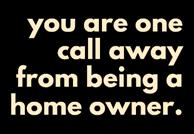



After finishing that rifle, it was on to the next one. I had been able to get Big Sexy zeroed in and collected some data as far as speed was concerned. However, I had not had the chance to shoot it any further than 100 yards. It shot well at that distance with a four-shot group measuring .44”, but I needed to get a few rounds on a target at further distances. This all went well, and like Ty, I had worked my way out to the 2,002 yard target and left my mark on it. Feeling like we had accomplished everything we needed to be properly prepared for the match on Saturday, we headed back to John’s reloading room to double-check the data we had just collected and visit.
We ended up in a little place called The Vault Tavern in Pilot Rock, where we went for our pre-match dinner. John had mentioned that they made a pretty darn good burger, so we had planned to eat there that evening. I ordered what they called the “Meat Trio Burger,” which was basically a cheeseburger with bacon and ham. The atmosphere and food were quite good with that small town feel I miss so much. As we ate and visited, we eventually realized that John Beloit was my cousin to some degree. I’ve never really understood that 2nd and 3rd cousin or what the term removed was all about, but this is how it shakes out. John’s Great Aunt Jeanette Beloit is a sister to my Aunt Jeannine Springer on my mom’s side of the family, thereby making us 3rd or 5th cousins, I think. So whatever that makes us officially, I don’t really know. Still, from that moment on, John is now “Cuz” and entitled to all the perks and privileges of family, which happens to include a couple of super secret jerky recipes and the family smoked sausage recipe.
latahrealtyllc latahrealty com @latahrealtyllc 208 883 1525



























































• Increased service capacity • Brand new car wash • New customer lounge area • Renovated sales room • Over 20,000 Sq Ft. of additional space • Live Plant Wall • Inside delivery center • Outside dog park
The morning of the heavy gun match, Joe and I met Ty at his camper parked just down the road from the shoot site in the designated camping area. When we arrived, Ty was busy cooking breakfast. So we all fueled up on a breakfast sandwich of fresh pork sausage, fried egg, and cheese on an English muffin. And yes, he had one all wrapped up in aluminum foil for John since he was not just my family, but Ty’s, too. We loaded the gear we had stashed at the camper and headed for the firing line. The morning of the match, the weather was out in force. We had wind blowing from nearly every direction but primarily from the right at 3 o’clock, somewhere between 0-35mph. Then we had rain/snow/hail, which only made things more challenging. The rain was making the usually dusty soil wet, making it hard to see where bullets were landing down range since there would be no puff of dust to draw your eyes to the impact point or to make a correction. The snow, on the other hand, shut the shoot down for a little while since we couldn’t see the white targets through the flurries flying sideways. The hits were limited to the first three distances for all practical purposes. The next five distances received an occasional impact, with only six rounds hitting out of 700 shots taken at them. Not a very good hit ratio at just about .8 of 1% on target.
I started strong with five hits in the first two targets, but something went sideways. I’m still not sure if it was the weather or the new barrel speeding up as it broke in since it started the match with only about 40 rounds through it. I will be taking it out and collecting some data in the next few weeks to see if that is indeed what happened. Those impacts were enough to secure fourth place behind the dynamic duo of Stan Cutsforth and Kasey Jones. A fellow by the name of Glen Lloyd out of Canada slid past me with a late-day fourth-round impact at 3,377 yards to knock me out of third place. Yeah, it was one of the .8 of 1% hits and a pretty lucky shot, but those count the same as any other in this game.
Ty was able to get his first impacts in competition with fourth and fifth-round impacts at 2,146 yards. Sadly he was in the same boat as the rest of us when spotting the misses and dealing with the weather. With those two impacts, Ty placed 16th in a field of 31. That’s not too bad, considering he’s a rookie, and the conditions were as harsh as I’ve ever seen.
We had difficulty getting John on target in the heavy gun match, with only a second-round impact at 2,306 yards. However, he came on strong in the second half of the light gun match on Sunday, scoring six hits on the furthest three targets, making for a dominating first-place finish. I’m not really ready to talk about my light gun performance. Let’s say that having two guns share a scope turned out to be a horrible idea. But I had fun, and that’s what really matters.
In the end, as the match came to a close, I spent three days with the best people on earth, my people. I had probably received one of the best hugs ever from John’s five-year-old daughter, Landrie. You know, the kind that little kids give where they wrap their arms around your neck and squeeze the stuffing out of you. As it turns out, I reconnected with my ELR family and added a whole new branch to the official family tree. We said our goodbyes and headed off in all directions for the trip home. My journey led to my mom and dad’s house at Freeman Creek for a few days. I guess my dad wants to build a greenhouse. We’ll see how that goes. The next match will be in Raton, NM, and I hope to have all the kinks worked out of Big Sexy by the time we arrive there in June.


The city bus lurches a bit as I hold tightly to the upright stainless pole, waiting to step down and out of the opening door. Worn shiny from countless hands grasping it, directing countless shapes, sizes, colors and status of bus riders to safely enter and exit the bus. Riders link their elbows around it while fumbling for their tokens to drop into the lantern shaped glass box next to the driver. He will smile at each of them, friendly and confident in the worn driver’s seat. He taps his cap as I say “Thank you” and descend the steps. With the motion he makes countless times a day, he rotates the lever and the bus doors close. It is choreographed with the sound of the air brakes and flows like a dance. Stepping from the rubber matted bus steps, my thin moccasins bring my attention to the hard city curb for a moment but the bustling scene into which I have emerged distracts-
The Age of Aquarius
 by JacquelinE Cruver
by JacquelinE Cruver
-all of my senses. I am afloat in the sea of people filling the Pike Place Farmers Market on a summer Saturday in 1973.
I can hear the buskers entertaining in multiple locations along the open alleys, fading in and out of audible range as I navigate through the moving crowd. I pass by the one singing his song about butterfly kisses, and imagine the sensation of someone’s eyelashes fluttering on my face and it makes me smile. I wander through the section of artisans’ offerings and see a young vendor I remember from a high school art class selling some of his remarkable cast silver jewelry pieces. The art rooms of large city schools were a hub for exploring many media. Pottery, sculpture, jewelry fabrication, batik and silkscreen, oil and water painting, charcoal and pastels, even film study were only some of the electives available. I quickly browse his creations and step aside for the throng of interested customers closing in behind me. Down the ramp to the lower level, the fragrances of the shops filled with imported fabrics, tapestries, caftans, sandals, incense, and candles, mix together to create the mystical scent of the market that I am seduced by with each visit. Entering one low ceilinged space I select some calming Nag Champa incense sticks for calming, positive energy. Crossing what can only be described as the stampede of foot traffic, I step into a shop that has every inch of its walls covered with blacklight posters and admire one called “Garden of Eden”. A silhouette of a man and a woman, arms-

-outstretched like a double breasted eagle are standing on a tall peak overlooking a panorama of purple mountains, flowing DayGlo colored waterfalls and rivers beneath a glowing golden sun.
Wandering back up yet a different ramp through overflowing displays of everything from leather bags and clothing to ornate zithers and mandolins, the bright lights ahead draw me to the rainbow of a complete city block of impressive produce stands and buckets of magnificent flowers. The beautiful vegetables, all hand picked that morning, are presented for us city dwellers to enjoy. I am enough of a local to know that two of the families I see behind the large, well arranged slanted tables are third generation farmers, related to classmates of my mother back in the 1940’s. One is an Italian family known for their selection of squash and the other is Japanese, and descendants of a family taken to camps during the internment of Japanese American citizens. They returned to purchase their farm back after it was taken from them. The cheerful young man is unaware of my insight into the history behind the stunning bunch of green onions I select. Doubling back along the arcade I pause to watch the famous fishmongers tossing 10 pound fish to one another. Each time I see this act, I wonder how long they have practiced making the effortless toss, never missing while calling out like sideshow barkers. The smell of fresh fish triggers my appetite and it is time to take the stairs down to the waterfront piers to my favorite fish and chips. The jesterly cooks are hustling behind the counter at a huge grill covered with halibut, salmon and cod. There is always a line but it moves quickly. As I wait for my order, I marvel at how they know the steps to zig and zag and not crash into one another. It is a perfect day as I savor my lunch beneath that glowing golden sun on the worn wooden dockside bench listening to the chattering seagulls that agree with me. The incredible melting pot found in that city will forever remain my image of the extraordinary people that lived and worked in the vibrant world around me. As a young adult looking out into that world, I was restless to use my courage to conquer and earn my place, whatever it may be. I had moved out on my own right after high school like the majority of my classmates. There was no shortage of affordable living spaces and I had found one a block from the miles of sand called Alki Beach and three miles from the 135 wooded acres of Lincoln Park, both familiar haunts of my childhood. I had several friends that had found small houses on acreage well within the city limits. We did not need cars in the city of well established transit routes. It was easy to get to parks, music festivals, theaters, cultural events and employment opportunities from any neighborhood. I was free to begin my independence and Hippie-ness. Our dwellings were usually the least expensive shacks available but the kitchens were filled with herb teas and wholesome foods from the selection at the co-op, and many friends. The interiors were sparsely furnished with unique vintage furniture, avoiding mass produced items. We selected utilitarian pieces that were sturdy and often hand hewn. I fondly remember a ten foot long table made of a section of an old miniature bowling alley, with tree stumps for chairs and animated talking faces always seated around it. Oversized pillow couches on the floor were common and ethereal strings of glass beads filling doorways made a pleasant sound while capturing glints of light. Interior walls were colorfully alive with murals of flowers, birds, and abstracts making playful statements of creativity and imagination. Nature-
-was brought in with open windows looking out to the food garden, shells, driftwood carvings, and a multitude of potted plants and pets. If you have found the internet aesthetic of cottagecore that has recently influenced interior design and fashion, then you have a good idea. It seems to be a revival of the 70’s back-tonature movement, however our intentions were of buying less material possessions, making things we needed, and to attempt to sway the societal norms that were creating alarming waste and disrespect for the earth. With its presence on Instagram and online shopping sites I see a hefty price tag attached to this remarketing and your grandma probably still has the pattern for that dress. If not, you can borrow mine. Even though indoor space was often limited, our creative endeavors were an important element. Painting easels, leather work benches, potter’s wheels, sewing machines, spinning wheels and looms for weaving functional clothing and fiber art were customary fixtures. Elaborate embroidery and adequate sewing skills were utilized to make homespun cotton shirts, long skirts, peasant blouses, and empire waist dresses. We practiced self-reliance but what we couldn’t make, we purchased from thrift stores and Army/Navy surplus stores. Yes, my bell bottom pants were navy regulation button ups.
Music was everywhere, both acoustic and amplified. The city life overflowed with people-places that were seldom without musicians, smiles and socializing. The large diverse groups of people listening to all genres of music were woven together in harmony. The feeling of oneness of the human family of man was expressed in those gatherings with sincerity. There was rarely a sense of loneliness because the invitations for smiles, embraces, and joining overshadowed any urge to isolate. The iconic Woodstock Music and Art Fair of 1969 had presented an awareness, shall we say, that love was all around us. It is disputed if it had any significance to ordinary people, but the message of the summer of love resounded with songs about brotherly love, world peace, and rejecting excessive consumerism. These concepts were referred to as the idealism of youth. These goals did not seem unrealistic to me, but at that age, the fact that the structure of our country was based on capitalism was lost on me. Nonetheless, I was hooked on love and peace and a simplistic lifestyle. Why would it be unrealistic to base our goals on our dreams? I believed if the present needed change, then it had to start in our minds, and seek ways to embody our philosophies, not just profess them.
As George Harrison noted, all things must pass and in a matter of a few short years, affordable housing for the working class was shifting to developments built upon fertile farmland. The empty lots vanished and pavement covered the soft dirt paths we had walked barefoot upon as children. The blueprints to handle the increasing population lacked foresight of the needs of people and more sustainable designs. Access to housing is a right, and so is access to food. In some areas food deserts were created being so far from public transit. The Pike Place Market had been scheduled for demolition in 1971 but a hard battle to keep it was won by the efforts of a citizen group called Friends of the Market. But the zoning laws and landscape were changing. I witnessed the local food sources start to dwindle, in addition to accessibility to nature. It soon became a long trek to reach crowded recreational trails miles out of the city limits to get our feet on a dirt path and hear the wind sway the trees. I imagine this contributed to the 70’s back-to-the-land movement. We-
Home&Harvest | May/June 2023 48
so much wanting to run away from civilization as we certainly understood the practicality of cities. Some of us found much success in the high-rise offices of corporate America, but not all of us were meant to be downtown city dwellers. I was not attracted to the sophistication and fashion, much to the chagrin of my poor mother who had made a mad dash off the family farm at her first opportunity. I wanted to continue my connection to the land like my grandparents had and was not so sure I liked the subtle tugging away from it. Perhaps that stemmed from my childhood spent outdoors playing in the dirt and putting scrap lumber and cardboard together to build a fort or making the bike trails longer through the woods to the new kids house. Together as a tribe we created paths through every empty lot and bramble thicket. We knew we did not own it but the concept of No Trespassing was not part of our vocabulary. We frolicked free from property lines and security fences that warned this is mine and that is yours. We were kids escaping the conceptual bonds of our ancestors’ acquisition of square feet of private land. We were only aware of the birds and the bugs and the earth under our bare feet in our glorious playground. I can’t help but see this as an obvious difference between a white man’s village and early Indigenous peoples’. It is said there is no word for ownership of land in their languages.

The young adults speaking up in today’s world are showing acute awareness of the issues impacting our earth and sky. The present generations are striving for a more harmonious balance, challenged by even more obstacles than we were, as we see the consequences of how we as a society consume, exploit and waste. It is the dance of humanity and its relationship with Earth’s finite resources and I am so encouraged to see signs everywhere that the crawl has begun to improve those faulty blueprints. I am reading and hearing more discussions of things like permaculture. Could these concepts still be alive? I am so delighted.

-weren’t
“This we know, the earth does not belong to us, we belong to the earth. This we know, all things are connected.” -Chief Seattle
“The old Lakota was wise. He knew that man’s heart away from nature becomes hard. He knew that lack of respect for growing, living things soon leads to lack of respect for humans, too. Keep your children close to nature.”
-Chief Standing Bear, Native American civil rights leader.
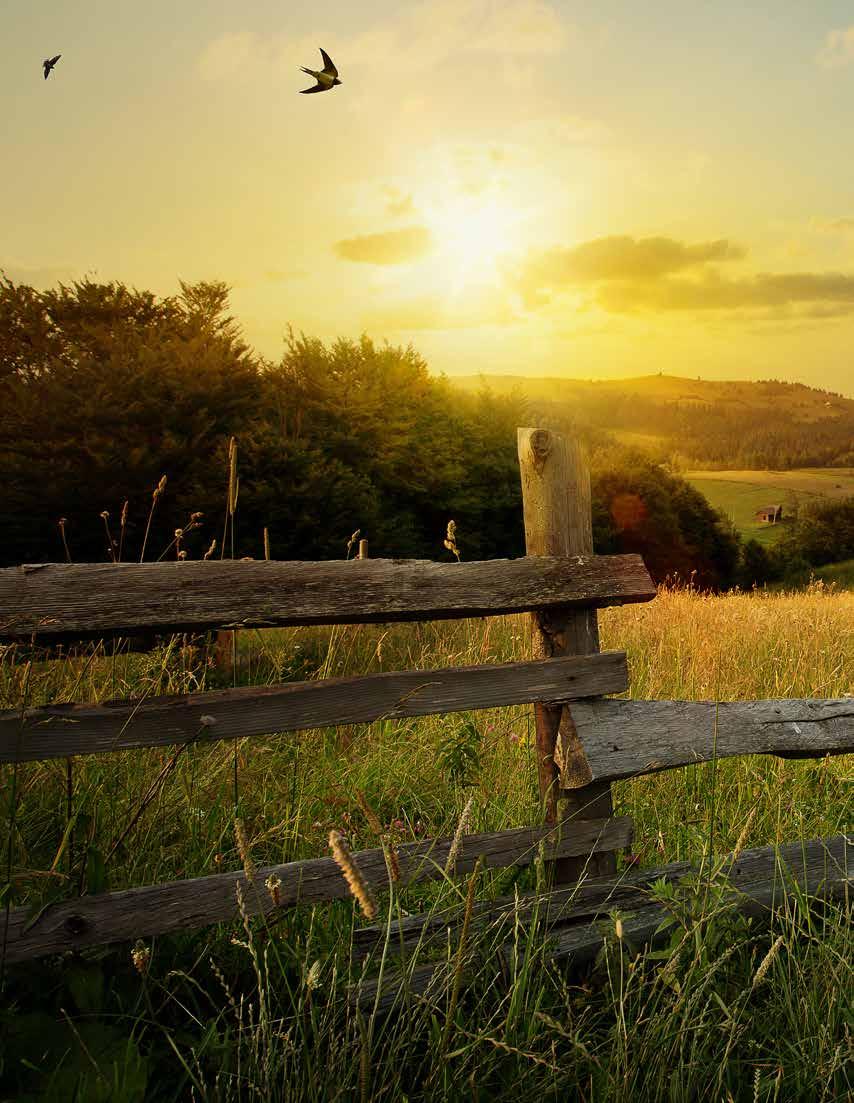
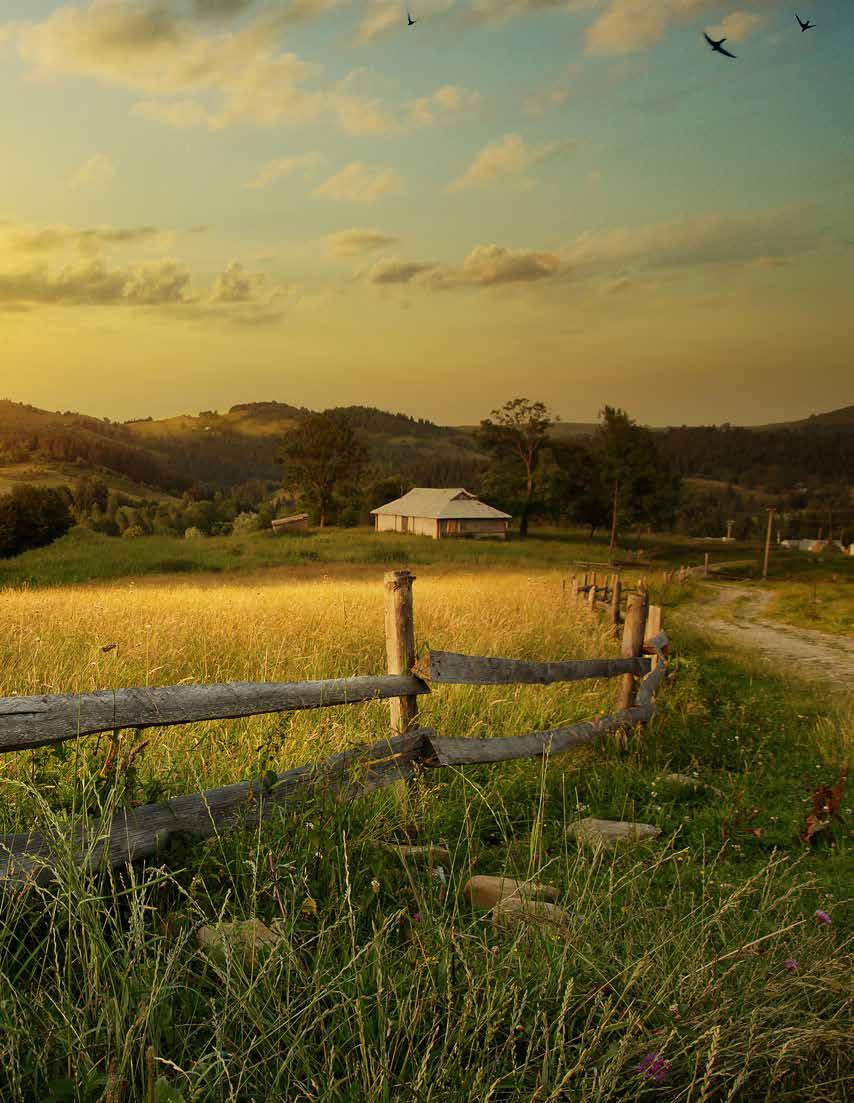


“Permaculture offers a radical approach to food production and urban renewal, water, energy and pollution. It integrates ecology, landscape, organic gardening, architecture and agro-forestry in creating a rich and sustainable way of living. It uses appropriate technology giving high yields for low energy inputs, achieving a resource of great diversity and stability. The design principles are equally applicable to both urban and rural dwellers.” -Bill
Mollison
The term was credited to Australians Bill Mollison and his student David Holmgren, in the mid seventies who drew ideas from many visionaries before them, like Rachel Carson (Silent Spring, 1962) and Russel Smith who wrote Tree Crops for a Permanent Agriculture back in 1929. Although Mollison did not claim to own the ideas, saying that knowledge can not be owned, he was recognized for developing and promoting the theory and practice of ‘permanent agriculture” and dedicated his life to teaching ways for humans to live more harmoniously with the planet. I can see the concept of intentional communities, small groups of people working together, willing to share the responsibilities and common goals of the design principles. Picture food forests, habitat plantings replacing urban grids of fences that only isolate us, walking paths and small bridges over waterways of conserved precious clean water, places to gather outdoors and still touch the earth, structures with living green roofs, shelter for families and privacy when needed all within the perimeter of a sustainable whole system design. This is a romanticized version but you get it.
In 2022, Oregon State, North Carolina State, Cornell, and University of Massachusetts were just some of the major universities offering ten week courses to become certified to instruct the present principles of permaculture designs and become practitioners to teach site-specific strategies described as climate-aware and community-invested to a growing audience. The term continues to encompass additional definitions and techniques like closed loop energy systems, and most notably the emerging technology that can be incorporated in future systems. This is where the youth will be the answer. Their proficiency will allow advances in the development of robotics, sensors, data input and innovations that will allow faster and more broad applications of these principles. This is a process that takes time and people that are interested in creating more sustainable communities. I see proof of the growing interest in these principles and am elated as it bridges the gap of our generations. Elements of more sustainable practices can now be seen in progressive large cities nationwide and have been in practice throughout our area for quite awhile. There are extension agents in every county to offer advice on more sustainable gardening practices. Both universities now offer degrees in sustainable food systems. There are Agricultural Research Service (ARS) researchers collecting, growing and storing germplasm to protect the biodiversity of our seeds. There are many dollars still being spent locally that are not funneled to transnational corporations (BUY LOCAL!), and the local Farmers Markets allow us to get food directly from the farmer to our table. There are 45 Conservation Districts in the State of Washington that provide expertise on ecological engineering, soil health and conservation biology, habitat restoration, water management and urban agriculture. There are farmers who have been implementing more sustainable concepts for the past decade in our area, excited-
-about the results that demonstrate that we truly are embarking on critical solutions to global issues. Monocultures and infrastructures cannot change overnight but even just starting some implementations of permaculture designs in communities could begin a path to recovery for the pressures of climate change, food shortages, soil infertility, dwindling water supply and the social unfairness we are witnessing.
I know many of you have had the good fortune of a wholesome, balanced life in the rural settings around the quad cities for generations. I also know some of you have left, only to return to raise your families with the same treasures you knew as a child. Many of us cannot go back to the childhood images we hold dear in our hearts. The world is destined to change, but it is clear that humans have the capabilities to alter its condition and compassion can sway it to a more positive direction. If the ties that bind us together are the same dreams of healthy food, clean water, places to touch nature and recreate outdoors, share bread and song with friends and loved ones, then it cannot be dismissed as the idealism of youth and together we can recover and retain these desires.
The Age of Aquarius that we were singing about in the sixties refers to the 2000 year period of time we are in that ushers in the humanitarian characteristics of the zodiac sign, Aquarius. Among many positive Aquarian attributes is the intelligence to come together for the greater good with a cooperative effort. It is the sign of brotherhood and harmony. Some astrologists see a call in the stars to relinquish the old and embrace new and creative ways. It is clear that the consensus is that there will be a shift from separateness and individuality to the oneness of mankind.
We’re working on it, Albert.
“ A person experiences life as something separated from the rest - a kind of optical delusion of consciousness. Our task must be to free ourselves from this self-imposed prison, and through compassion, to find the reality of oneness.”
-Albert Einstein
Home&Harvest | May/June 2023 53
 Pfc. Floyd W Hicks and wife Zelma, taken March 27, 1943 Long Beach CA - two days before leaving for the Army
Pfc. Floyd W Hicks and wife Zelma, taken March 27, 1943 Long Beach CA - two days before leaving for the Army
Searching for PrivateHicks
by Elaina
Pierson
In April of 2021, the Latah County Historical Society was contacted by an individual who was searching for a photo of a Moscow High School graduate by the name of Floyd Hicks. Inquiries of this sort are not unusual; we regularly field photo requests from newspapers, students, curious family members, and so on. This one, however, was unique.
The researcher, Teresa Hirsch, is a volunteer for the Fields of Honor Foundation, a Dutch nonprofit that works to honor American service members who lost their lives in World War II and are buried or memorialized in one of the American War Cemeteries located throughout Europe. A major part of the Fields of Honor mission is to maintain an online database containing a memorial page for each of these casualties, complete with photos and life history. There are currently about 38,000 individuals listed in the database with around 7,000 of those lacking personal memorial pages. Finding information for these remaining profiles is the work of two dozen dedicated volunteers, which is how Hirsch found her way to us.
Floyd Hicks was born in Missouri in 1922. By age 13, he and his family had made their way to Moscow, where he graduated high school around 1940. On the Ancestry database, Hirsch found a dedication page from a later MHS yearbook. It states, “In all humility we dedicate this issue of ‘Bear Tracks,’ a visible expression of our hopes, to those graduates of Moscow High School who have sacrificed their lives in the service of their country.”
Twenty-six young men are named below, including Floyd Hicks. Our archives here at the historical society didn’t produce anything more so the MHS library was consulted.
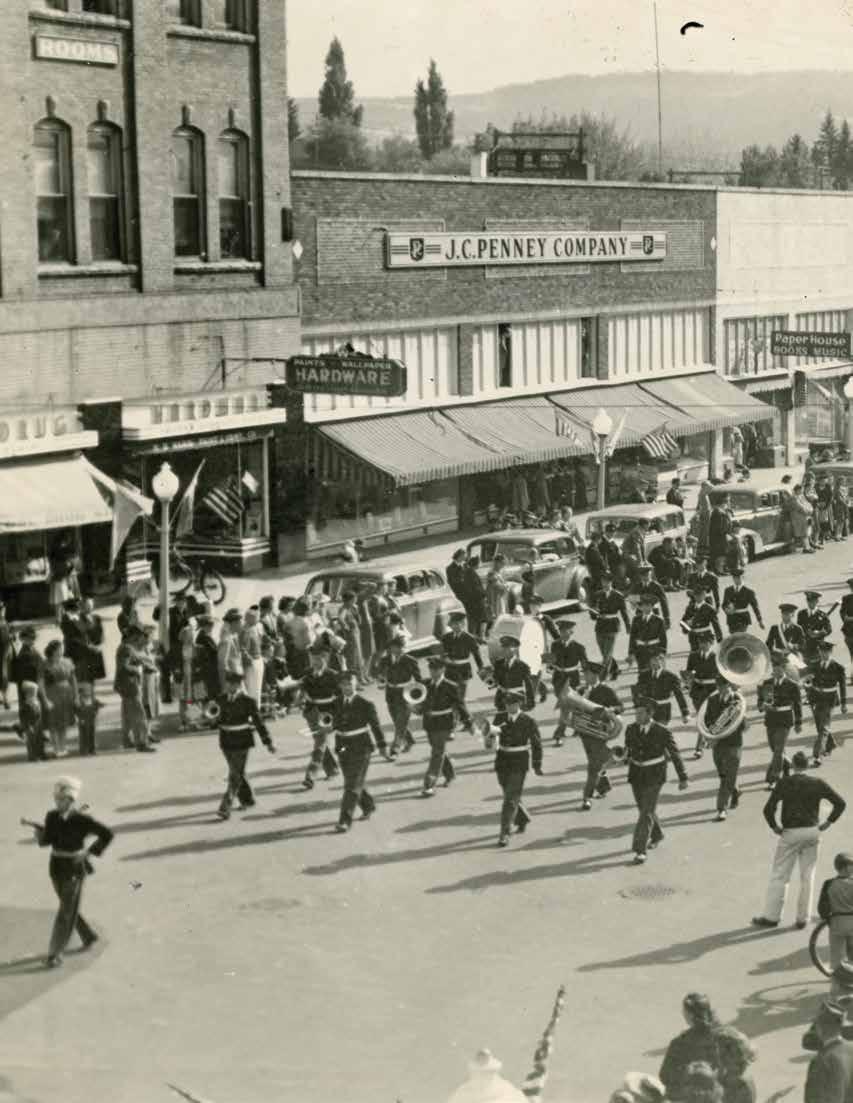 LCHS Photo 30-17-013 - Soldiers marching in a parade down Moscow’s Main Street
LCHS Photo 30-17-013 - Soldiers marching in a parade down Moscow’s Main Street

Unfortunately, their collection of past yearbooks was missing any of the pertinent years that may have contained a photo of Hicks. It was here that my part of the search ended – somewhat unsatisfactorily – but I remained intrigued, not only by the mystery of Floyd Hicks, but also by the nature of his final resting place.

According to his enlistment paperwork, when Hicks joined the Army in March of 1943, he was married and working as a welder in Los Angeles, California. He served as Private First Class in Company L of the 311th Infantry Regiment until he was killed in action in Germany on January 31, 1945. Nearly a month later, the Army posthumously awarded him the Bronze Star for his actions on that fateful day: “Heavy machine gun fire stopped the advance of the platoon to which Private First Class Hicks was assigned. When an American soldier attempted to capture two enemy soldiers holding up their hands in an attitude of surrender, he was shot. Private First Class Hicks, seeing this action, single-handedly assaulted the position, firing his BAR [Browning Automatic Rifle] from the hip as he advanced. After advancing 75 yards he was fatally wounded by the dense fire. His heroic actions and great personal courage inspired the remaining men of the platoon to initiate an aggressive assault on the enemy and are in accordance with the highest military traditions.”
Pfc. Hicks was buried in a newly created military war cemetery in the village of Margraten, in the Netherlands, along with what would eventually be 17,738 fellow American soldiers. In the years since, that number has dwindled to just over 8,000 as bodies were repatriated to the US. An additional 1,722 listed as missing in action are memorialized on the Walls of the Missing. Ground was broken for the Margraten Cemetery in the later months of 1944 with labor provided by the largely African American 960th Quartermaster Corps – segregation was still in effect at this time, often relegating Black soldiers to rear duties. As the number of casualties increased with the Battle of the Bulge from December 1944 through January 1945, it became necessary to seek assistance from the citizens of the town. Thus began the unique relationship between Margraten’s people and the Americans interred nearby.
To show appreciation, the graves and memorial names began to be adopted by the grateful residents of Margraten, who tended to and laid flowers for each fallen soldier. This adoption program continues today as the Margraten Adoption Foundation, with many adoptions being passed down from generation to generation within families. The cemetery was ceremonially opened on Memorial Day 1946, an event which garnered international attention as well as 20 trucks full of flowers sent from 60 surrounding villages.
In the years following its opening, the Margraten Cemetery would be redesigned and recreated as the Netherlands American Cemetery, overseen by the American Battle Monuments Commission. It was formally opened by Queen Juliana of the Netherlands in 1960.
Today the 65.5 acre site includes a memorial tower with a chapel, and a reflecting pool in the Court of Honor, which is lined by the Walls of the Missing. Beyond this is the burial area itself, with white marble headstones placed in gentle curves across the rolling green fields.










































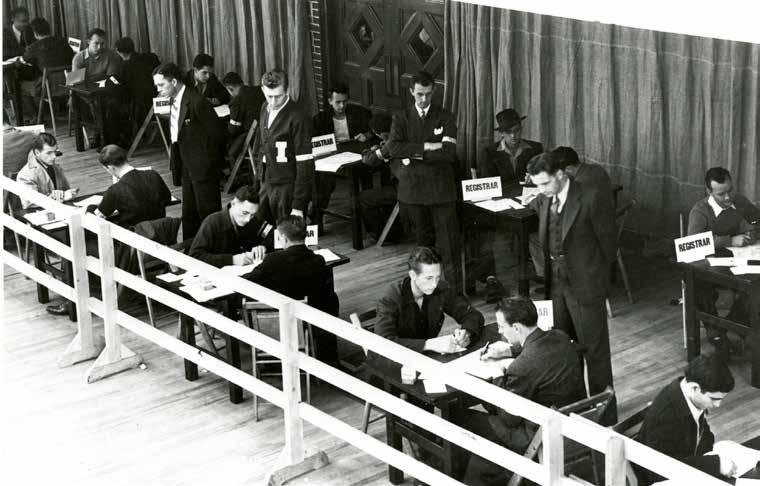 LCHS Photo 30-17-035 – WWII draft registration at the University of Idaho
LCHS Photo 30-17-035 – WWII draft registration at the University of Idaho
Each year on May 4th, Dutch Remembrance Day, elaborate commemorations memorialize the American sacrifices of war. In 2005, President George W. Bush became the first American president to visit. His speech that day noted the appropriate nature of the Netherlands as final resting place for so many American soldiers:
“It was from a Dutch port that many of our pilgrim fathers first sailed for America. It was a Dutch port that gave the American flag its first gun salute. It was the Dutch who became one of the first foreign nations to recognize the independence of the new United States of America. And when American soldiers returned to this continent to fight for freedom, they were led by a President (Roosevelt) who owed his family name to this great land.”
In 2008, an oral history project, Akkers van Margraten (Fields of Margraten) was undertaken by the Legacy of the War Heritage Program and the Association of Margraten Local History Organizations, resulting in a book, From Farmland to Soldiers Fields, and a television documentary. In 2014, a joint effort between the Fields of Honor Foundation and the American Battle Monuments Commission created the “Faces of Margraten” project. This tribute occurs every two years for Remembrance Day, when scores of volunteers work to add a photo of each individual soldier to their graves and memorial names. The research that has gone into finding these photos and learning the stories of those memorialized here resulted in a book, The Faces of Margraten: They will remain forever young, which received its first English-

-language edition in January of this year.
Among the over 10,000 Americans memorialized in Margraten today are four women, 172 African Americans, and six Medal of Honor recipients. Also buried or memorialized here are 32 from Idaho, including two soldiers from Latah County: Cale E. Judd of Troy and Lloyd G. Hasfurther of Genesee. As for Pfc. Hicks, even though he did not live in Moscow when he enlisted and therefore isn’t included in Latah County military rosters, one mention of his service in an old yearbook was enough to bring the connection to light, demonstrating the sometimes sideways and frustrating nature of doing research into the past.
In the time since I first learned of Pfc. Floyd Hicks and the Netherlands American Cemetery, a photo and more information about his life have been found through the dedicated work of research volunteer Teresa Hirsch.
As the Dutch prepare for Remembrance Day on May 4th and Liberation Day on the 5th, and we here in the United States prepare for our own Memorial Day, it is appropriate to reflect on the sacrifices made by so many in defense of the shared ideals of justice and freedom. By tending their graves, saying their names, and seeing their faces, we are reminded of the high price we’ve paid for these ideals. The commitment by those who care for the Margraten Cemetery honor this sacrifice with a powerful demonstration of the kind of cooperation and camaraderie that helped move the world through one of its greatest trials, the Second World War.
Home&Harvest | May/June 2023 60
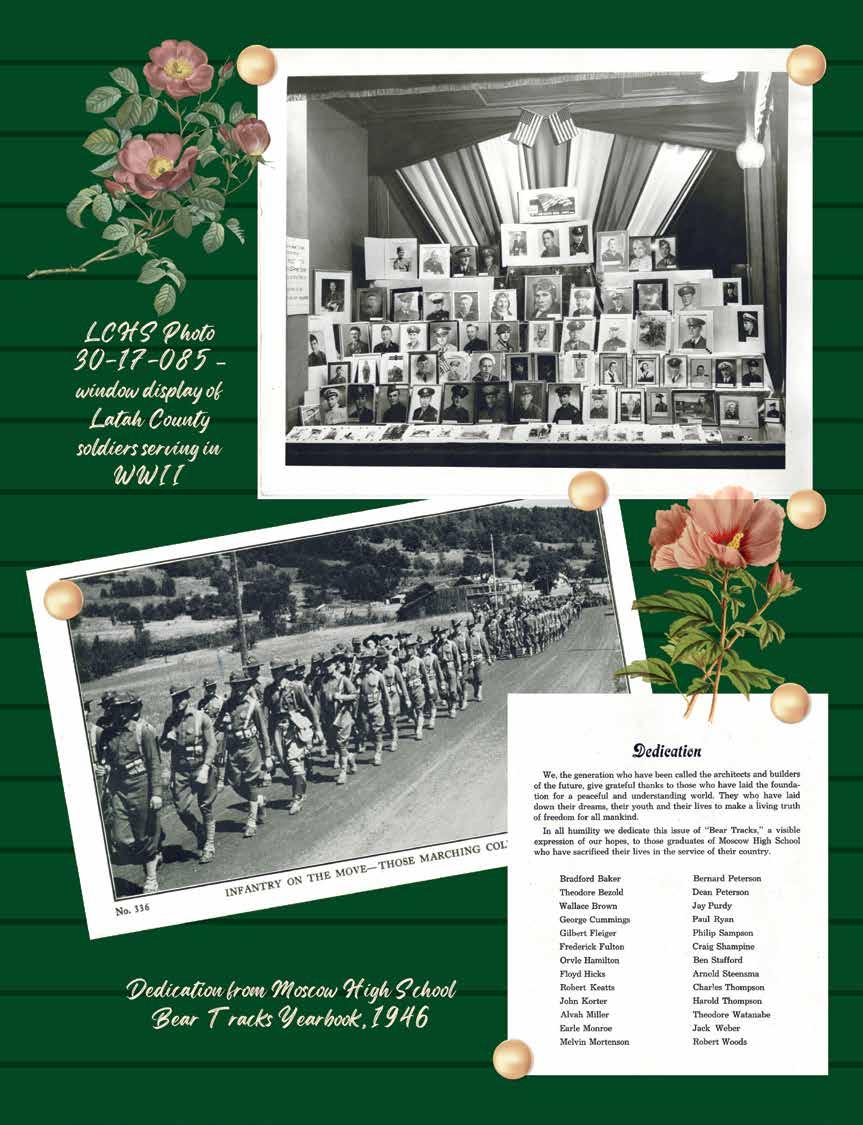
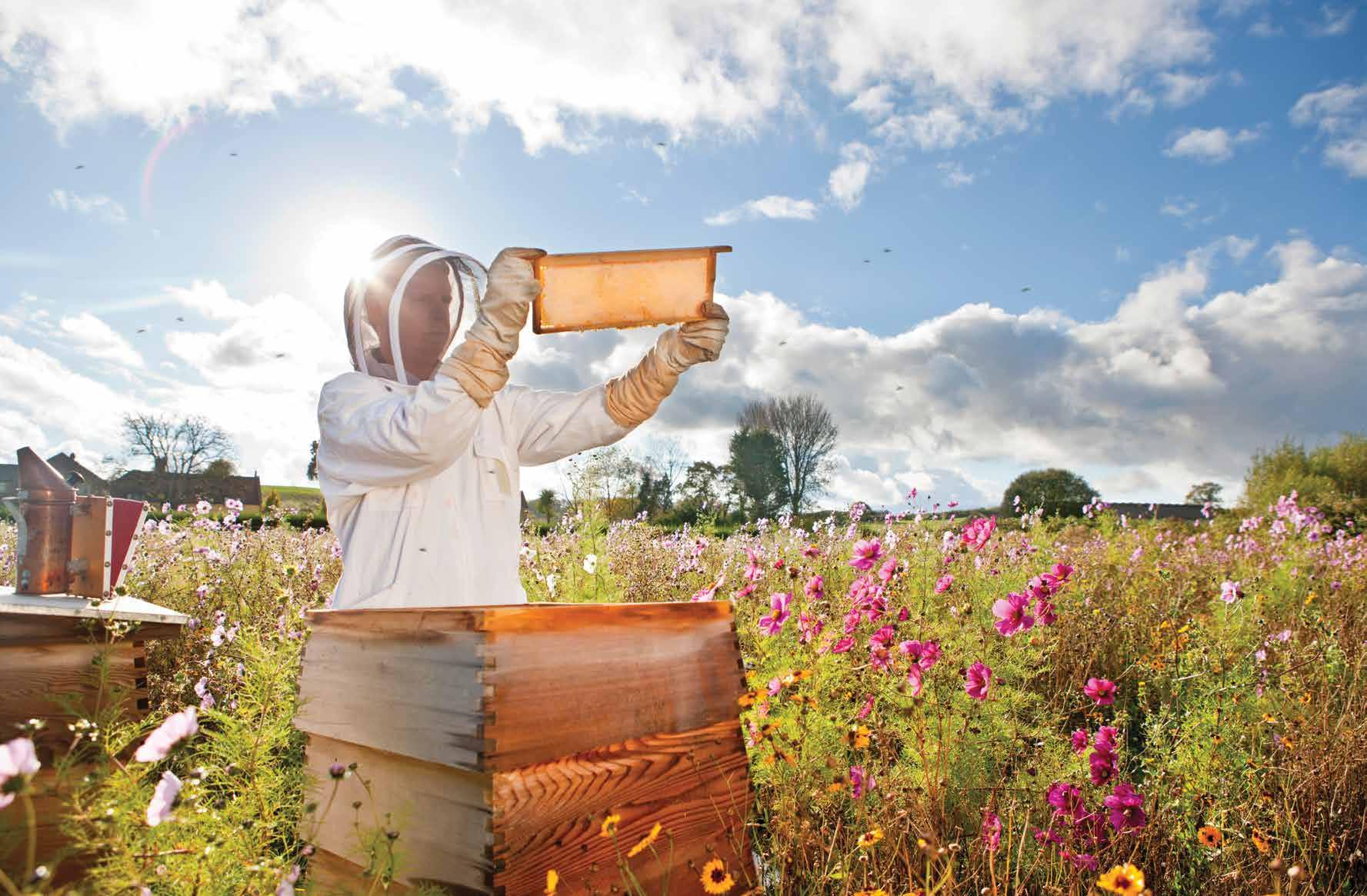
Backyard Beekeeping
 by: Trent Morgan
by: Trent Morgan
I thought I had prepared myself for this potentiality. In life and my career, my experience has been if I put in the work, do the research, get up early, and show a little grit, I don’t fail. Indeed, the stakes have been high in my chosen career of Nurse Anesthesiology. I don’t fail. I can’t fail! This attitude is hard to relinquish in any aspect of life, even hobbies, and on this mild day this February, as the noon sun cast warm rays on my face and the dead-still beehive sat before me like an abandoned city in an apocalyptic horror flick, I felt the sting of failure. My dread was complete as I gently lifted the outer cover and then carefully cracked the inner cover of the Langstroth hive. Absent was the warm moist air I would often feel on the back of my hand from the heat generated by a healthy living colony of Apis mellifera, the scientific name for the honey bee. They were there, much as I had seen them only a week ago. Still a large mass of winter bees called a cluster, even in death, huddled around and protecting their queen somewhere in the center. I wondered if she was the last to die as her female workers, their only job in a short life to attend to her and her offspring, tried desperately to save her, to sustain her by generating enough heat through exercising their flight wings to keep her warm. My mind raced…. Did they run out of honey, the precious carbohydrate and pure fuel that they spend all year storing? Had they been weakened by disease? Had last week’s warm weather caused them to break their cluster, disrupting their fine-tuned microclimate and making them vulnerable to a dramatic temperature drop? I tried to occupy my mind with such queries as I conducted a grim hive autopsy, pulling each frame out one by one and brushing off cold, dead bees. This was not something I had expected to be doing on this warm banana-belt winter day. A pile of dead bees was stacking up at my feet. The work was helping me stuff the emotions and a feeling of loss. I am actually pretty good at doing that type of dysfunctional coping—saving emotion for later, that is, after a life spent in difficult situations where sadness or fear can impede getting things done. But this is beekeeping and my motives here are philanthropic, so I’m not alone among hobby apiarists, those of us who keep bees for non-commercial reasons. We feel loss when the inevitable happens and we lose bees. It’s like any other pet I guess but times fifteen or twenty thousand, the number of bees in an average colony. Last year, some estimates were that local hobby beekeepers lost between fifty and sixty percent of their colonies.
Maria Garvey, one of my many mentors in gardening, a backyard beekeeper and just a really awesome human being, recently shared with me her similar emotions.
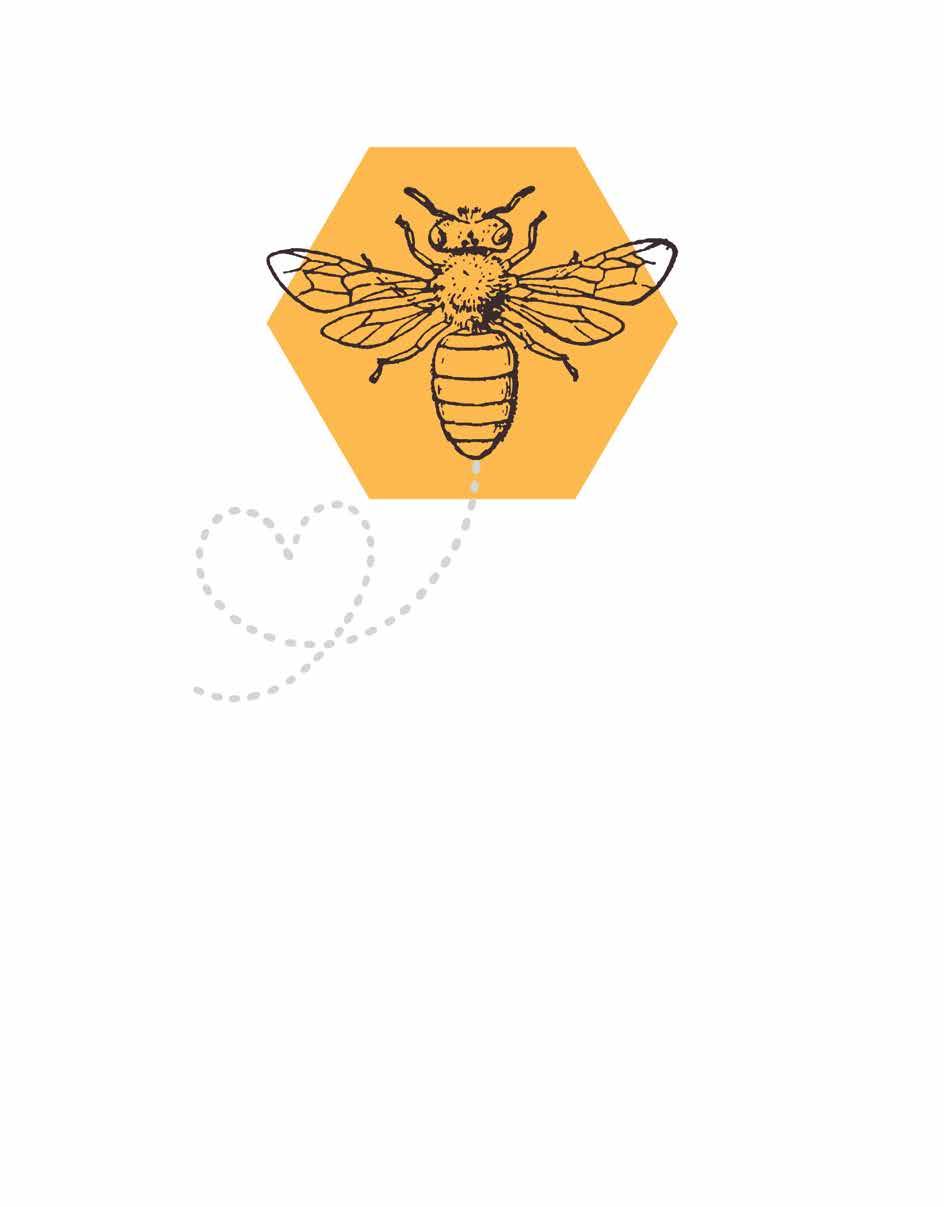
After what she described as “another year of losing my girls,” (she lovingly calls them her girls) she said, “I was doing really good. I didn’t cry this time and thought I wouldn’t. And I didn’t, until I was in a work meeting talking about ordering this or that for beekeeping at the store, and I just burst out crying. My boss was like whoa, what’s going on here? It was just so hard to lose my girls again. I did everything right.” You will hear more form Maria later. She is an amazing local resource on gardening, plant disease diagnosis, and beekeeping. She shares and teaches locals through her work as master gardener and as lead in the Lawn and Garden department at a local ranch and garden store. But during the moment of my loss, feeling a sense of failure, she was my therapist and it was cathartic to just hear her similar feelings and know I was in good company. Beekeepers are good company! And, that sense of community is the real story behind backyard beekeeping. It is about a group of amazing local folks with likeminded ideas about our interconnected physical world and what we can do to make a difference. That is what this story is about, so come with me on the journey of a beekeeper wanna-be. Witness the transformation of someone who as a youth had dodged working honey bees that infested the walls of our root cellar and was scared witless when asked to go fetch some preserves or set irrigation pipes near stacks of hives brought in to pollinate our cherry orchards. Now, I am one who sees every sting as somehow my fault and a badge of honor, and who grieves a little when any bee perishes. On our journey we will meet some amazing local people, explore if YOU are cut out to be a backyard apiarist, ask and answer your bee questions, and we will have a great time along the way.

My first stop in education about bees well before I decided to “take the plunge” but after spending considerable spare moments in Google searches and YouTube videos was a good friend and former co-worker. If you are lucky, you might have such a friend. Ed Vivian is a physician anesthesiologist with whom I worked for many years. With his contact already on my shortlist, I shot him a text. His wife Becky is a master gardener with Asotin County and they both love bees. A return call did not take long; I was to learn that apiarists love to share their knowledge and passion for their hobby. Many conversations and much encouragement later, Ed and I were suited up in the cool of the evening at his western Clarkston Heights property, sealing up and loading two of his vigorous hives for a new home in the Lewiston Orchards. I was embarrassed that my newly-purchased bee suit and gloves glowed clean, bright and new in the sunset light. Ed was kind and said, “Don’t worry, all of your gear will be sticky and stained before you know it.” I did not yet realize the true gift Ed and Becky were giving me by selling me strongly established hives. Hobby beekeepers want newbies to succeed. One of the first rules of beekeeping I learned that evening as we gently loaded the heavy and carefully- wrapped and humming hives into my truck bed was the two feet to two-mile rule. When relocating a hive, you should do so under two feet or over two miles away. Honeybees have an amazing homing mechanism, but foraging bees can become confused if the distance is between these dimensions. Ed followed and once at my home, in the last dim light of day, together we lifted the humming hives, both consisting of two “brood boxes,” onto prepared bases of carefully-arranged cinder blocks near my apple and apricot trees. It was dark now with the night sky showing. After Ed left, I lingered and offered a chance wish at the brightest twinkling star that the bees would like their new location and that we would-

More than retirement. It’s spare time for fun.





Complete your mortgage application online in minutes at p1fcu.org. A new home to create more memories.
NMLS ID #527990
-have great success. My experience was just getting started and what a time it was going to be.
As my new beekeeping mentor, Ed urged me to join our local bee keeping association- LC Valley Beekeepers. It was there that I would meet one of the humblest, and genuinely knowledgeable hobby apiarists in our region, one who I have labeled in my phone directory, “Bee Man” John. Before meeting John, I checked out LC Valley Beekeepers Association’s Facebook page and found out that they meet the first Wednesday of each month at the Lewiston Community Center. Lee Gibbs is association president and also an experienced resource. At my first association meeting I sat next to Ed, but in no time the friendly group had me feeling like I belonged and was in the right place to learn. Swarm season was coming up and they talked about preparation for taking calls and going to catch swarms. A great part of a local association is networking to capture swarms in the area and take them to new locations; established beekeepers who have lost their bees or those just getting started and are prepared. My mind had changed from the days of my youth, finding a swarm as a nuisance and danger to now an opportunity. Remember the root cellar and adjacent old house that I mentioned? Well, that hive lived for as many years as I can remember and come to find out, probably “split” and swarmed at least once a year. Dad would call our Bee Man, and he would come get them. I would be calling my Bee Man more than once! You might not even notice John in a group, and I think he might want it that way, but mention honeybee and it is as if you flipped a switch; this kind eighty-one-year old’s gaze will engage and hold your attention. I took John’s and Lee’s introduction to beekeeping class in the Spring of 2022 and was excited to talk to John one on one. I asked if I could buy him an ice-cream. He just wanted a cup of coffee… black. That made sense.
John spent thirty-five years as a merchant Marine and somehow found himself in Lewiston. We do live in a port town after all. Like many of us, he has adult children, six of them scattered around, and he has found hobbies in his retirement. I first asked John about the local club and when he became involved. “In 2012, I and some fellow enthusiasts started the club. Well, that is after we realized that beekeeping was illegal in Clarkston!” Really? I was surprised! “Why?” I asked.
“We never could really figure out why, but the law was put in place in 1945. It took us a couple of months to convince the city council that beekeeping was safe and we were off and running.” The club now has one hundred twenty-nine members on its roster, has an active Facebook page, and gives local classes to promote the hobby. Lee and John recently were the educators at a Lewiston “Getting Started Backyard Beekeeping” course, where over fifty eager new and some experienced apiarists from around our region came from as far as Riggins, Kamiah and Pomeroy.
One early retirement hobby of John’s was beekeeping, but another gardening. John explains, “Beekeeping promoted an interest in gardening; native and non-native bees must have sustainable healthy sources of pollen and nectar to survive, and they need them especially in times of dearth. Knowing what native and non-native plants, flowers and trees provide during hard times for bees is important”. I knew dearth is the time when there is a shortage of resources for bees. John says this challenge led him to many hours and years of learning and teaching others as-
-a Master Gardener. So much so, that in Asotin County where John served, he was awarded Emeritus status in that role. John follows along this line in our discussion seeing the opportunity to teach an interested party. “Gardeners can help (the bees) by planting the right plants and trees. And we have the advantage of using irrigation. Even weeds we might not think about like milkweed help bees. (I knew that even hated star thistle is a great source of nectar for honey bees and now, some honey is even promoted that way.) Plants like goldenrod and the asters make a huge difference.” He pauses to take a sip of his coffee, giving me a moment to tap out some notes on my laptop. I’ll need to look up asters later, I noted. It turns out this is a term for the genus of common flowering plants- Asteraceae, such as daisies, sunflowers, chrysanthemums, marigolds, echinacea and many more. John goes on to cite trees, some that bloom early and some that bloom late, all good at sustaining bees in those critical times. I’m feeling like I need to go to the local nursery and plant more trees to save the bees, and John is just getting warmed up. Next, we talk about native bees and the wonderful ways that plants and bees, both native and the imported honey bee, have adapted to each other. Specific species of plants have specific pollinators that fit perfectly into their reproductive parts for maximum pollination efficiency. John reminds me that though we love the honey bee, they are not as critical or efficient as native bees in doing the work of pollination for native plants. And he reminds me that one out of every three bites of food we take, is pollinator dependent. John takes a side road, possibly from his years on the open seas. “Bees were brought over with the first European settlers. Can you imagine what it might have been like to keep a live hives of bees during those many cramped weeks at sea?” He smiles. I thought about this, and that I had distant relatives on one of those ships. I wonder if they bunked next to a beehive?
Of course, those hives looked much different than the ones we know today. And we are off on our next topic.
“What do you think is the best hive to use as a backyard beekeeper?” I ask.
Another broad smile… “That is a great question.” John likes the Langstroth hive, a configuration most perfected by, you guessed it, Lorenzo Langstroth, a minister from Pennsylvania in the 1850’s. He was the first to make a wooden hive that considered “bee space.” Of course, there were many before going back even thousands of years: the Egyptians, Romans, Chinese, but they had not gotten it quite as right. For centuries, harvesting honey and wax meant the destruction of the colony. Langstroth applied what he observed in a new way as he noted honey bees have a preset blueprint when making comb to preserve movement or “bee space.” Lorenzo realized by creating a meticulously measured-out format of frames on which the bees can create their comb, one could then remove parts of the hive without destroying the rest. This is the structure we see most often today, especially in commercial operations, stacked at various heights based on how many boxes are stacked for each bee colony. As you might expect, entrepreneurs, inventers and optimistic apiarists are always experimenting with making a good thing better. Most are made of wood, some plastic, and some have fancy mechanisms for extracting honey so it just pours out of a spout. Apiarists are passionate about what hive they choose, so I have learned to leave that topic alone but listen politely and glean what information works for me. John says that regardless of-
Home&Harvest | May/June 2023 67
-how you collect honey, giving it away is more rewarding that selling it. “I have never sold a jar of honey in all my years, and I’ve never had a neighbor complain about my hives, either.” I realize, after talking to John, how far my thinking has come since my youth working a commercial orchard. We saw the bees as a tool that were brought in and taken away so we could resume our regimens of herbicide and pesticide use. For years I would react in defense when the notion of “pure organic orcharding” came up. After all, it has always been the consumer who has driven the market for the perfect fruit or vegetables. Raising cherries commercially, we knew that the presence of a single fruit fly larva in one of our cherries would ban our fruit from our packing shed for three years. Because of this, we followed our field man’s advice to the letter on what to spray and when, which was frequent with no thought for what it might do to beneficial insects. It wasn’t until I took gardening courses that I realized how wrong that thinking was, and that the literature that comes with any pesticide gives detailed guidelines on safety, application and other details to keep ourselves and the environment safe. For more on this, I needed to talk more to fellow master gardener and beekeeper, Maria Garvey. She has a great personal story. Born and raised in Madrid, Spain, she remembers playfully watching honey bees as a girl at their family’s summer home and being told, “Don’t bother the bees. They are working.” This made a lifelong impression. Her life eventually brought her to Lewiston where she built on her wonderment which, like John, took her to master gardening. Her one regret looking back she says is, “It took me too long to take the leap and get my own bees.” She has the perfect inquisitive mindset for it and loves to educate her staff, customers, and gardeners regarding good horticultural and beekeeping practices. She spends time training her staff at her place of employment about reading labels to all lawn, garden, and orchard products. “I don’t apply anything I don’t understand,” she says. “A lot of research goes into agricultural and pesticide applications and it is a person’s duty to read the label.” I knew she was right as I had been through that mindset transformation personally. We turn to Maria’s experience. She is a pro in my mind but has had three heartbreaking years with her backyard colonies, yet is not giving up. She will be receiving a “bee package” as will I this spring. A package of bees is three pounds of worker bees with a mated queen to populate a new hive. This year they are providing one-hundred and forty to local hopeful beekeepers. Once you get your bees, you need a hive, and Maria explains that she makes sure hobbyists have all they need to succeed. Larger boxes with ten inner frames for bees to create comb for honey are called brood boxes as this is where the queen also lays eggs and nursery bees feed and care for them until they emerge. Boxes of smaller height, but also with ten frames, are called “supers” and that is where, in the classic Langstroth hive, bees make extra honey for harvest. There is other gear you will need for caring and processing honey and comb which can be found locally as well. We talk about ways to keep bees healthy and again discuss the use of pesticides. A key, she says, is to always be pest specific and ask yourself if it is a real infestation or just something cosmetic you don’t like. I remember from master gardener classes that all plants have an ability to fight and resist a pest or disease if we keep them healthy. Often there are natural insect predators or environmental actions we can take without resorting first to a spray bottle. And even some “organic” options can be caustic-
if not used properly, such as horticultural vinegar, she offers as an example. Finally, she offers to any would-be beekeepers, “You have to know what you are getting into and then do it. Educate yourself and remember this is husbandry. I started with a Snow White attitude; that the bees would love me and I would care for them. I didn’t get any protective gear but after walking around with a puffy face looking like Quasimodo with my eye swollen shut, I realized this is husbandry and bought a head net, then a bee suit.” If honey bees are not for you, she suggests putting some hives out for native bees like bumble, mason or leaf-cutting Carder bees. But she warns with a smile, “These small hives are like a gateway drug to honey bees,” so be warned. Either way, Maria wants everyone to succeed.
I wanted more of a perspective from a professional beekeeper, so I reached out to Jacob who owns a commercial apiary in Clarkston to gain a commercial beekeeper’s perspective on backyard beekeeping. It was hard to find a time to meet. He is literally as busy as his business in bees demands. We met one late afternoon this April. It had been raining and cold for the past few days, not good weather for bee work, but today it warmed up, so he had been visiting hive field locations until late afternoon. He would tell me one thing he enjoys about his work is the solitude and that eighty percent of his hive locations don’t have cell service. I catch Jacob at his work yard in Clarkston and he invites me to walk and talk while he problem solves a specialty forklift issue and tends to urgent duties. I imagine that Jacob had a hard time sitting still in the grade school classroom! He is happy to share his knowledge with an analytical approach about beekeeping in a way I had not experienced with hobbyists. Jacob tells me he worked in agriculture in his youth, in vineyards mostly, and then took a position as one of many research and beekeeping assistants with Washington State University. There he spent many months learning bees, especially documenting queen behavior. He now has over two thousand hours with bees and while he is all for hobby beekeeping, he understands why yearly death rates for colonies under hobbyists is estimated at sixty-four percent, while with commercial apiaries is around twenty-two percent. He says there are a lot of mistakes to be made, and subtle nuances of what is going on in a colony are easily seen with experience but often missed by novices. And, little details lead to big problems. He likes hobbyists, sells to them locally, but does not have the time to mail bee “packages,” or queens, like commercial operations you find online. It is not that his operation is small; he wintered over four hundred hives this season and on average builds that to about six hundred in the summer months. He will be selling several hundred nukes to locals this year and says he is careful to only send out what he believes are healthy bees, strong and local, not something you always get when you mail order. A “nuke” is a basic colony of bees with a known and mated queen, similar to what you might get if you capture a swarm. This side of his business involves dealing with customers, and when asked what he likes most and least about commercial beekeeping he laughs and says, “Customers. Some are really great and others can be difficult. Both selling products and finding locations for hives can be challenging.” Besides housing developments going up in areas that once were rural agricultural ground with rare complaints from new homeowners, he explains that hobbyists tend to have lots of ideas about beekeeping. These ideas come from many sources that may not be well vetted or specific to our area and they may want to debate what Jacob recommends.
Home&Harvest | May/June 2023 68
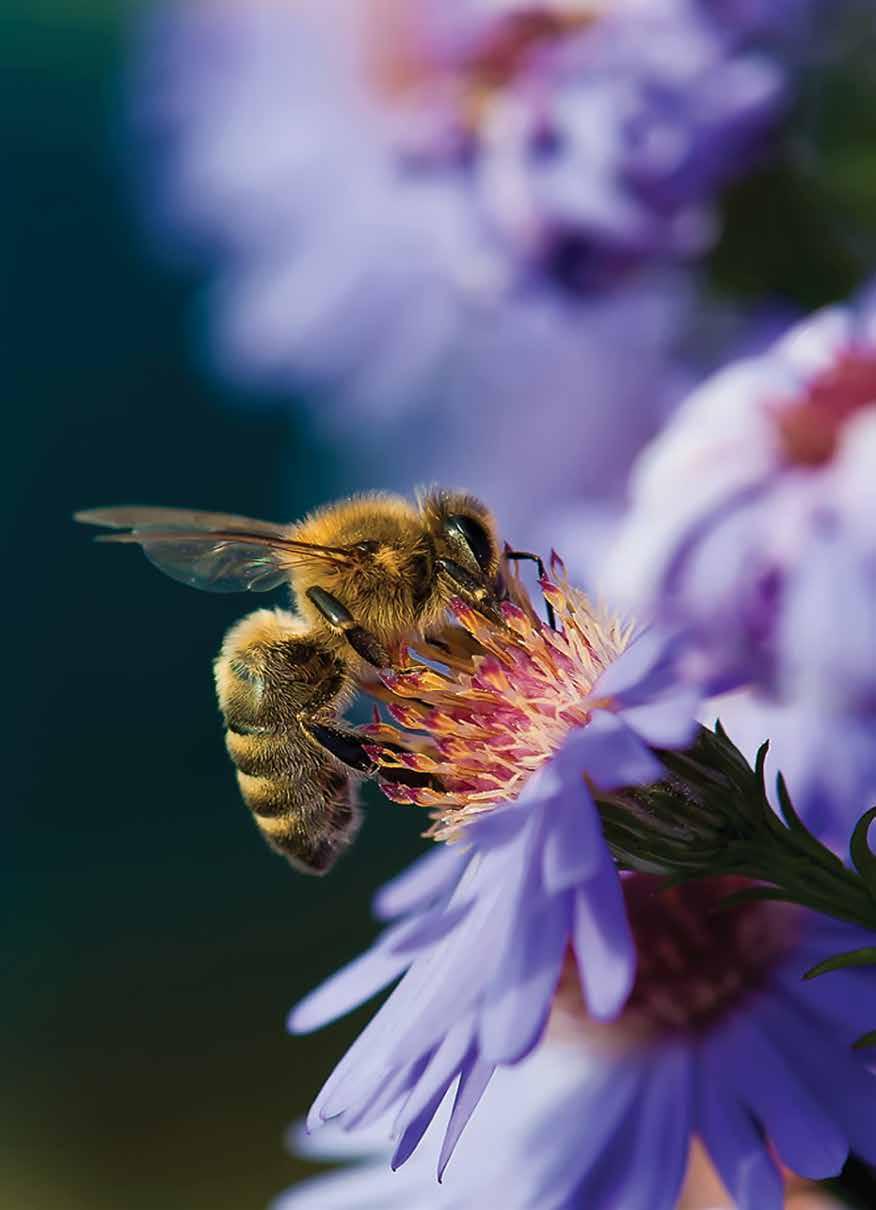
“Of course, everyone is entitled to their opinion. I just don’t have time to spend convincing folks about what I know and have years to back up.” He says this as I follow him into his large storage area to complete important tasks. Another issue I want to know about is if backyard beekeepers can have a negative impact on larger operations. “Not really,” he says. “A hive or two in-town or even close to a commercial group of hives won’t have much competition for resources. What you really should worry about is exposure to diseases if you set hives too close together.” We talk about mite treatment and he suggests mandatory treatment for mites in the spring and fall. “Whether you see evidence of them or not.” Mites have long been known to be a major factor in bee mortality and are spread often by drones, male bees that travel from hive to hive. This leads to me asking him his take on colony collapse. There is a pause and I read that there is a lot of knowledge behind his answer. It is not what I expect; the usual things hobbyists discuss- pesticides, resource degradation, diseases. He believes much of the frenzy and anxiety in the past regarding colony collapse stemmed from a USDA program that compensated huge commercial apiaries for “losses.” This made the news and caused a lot of alarm. He explains that you will always have losses in beekeeping and when it comes on a scale where you can be reimbursed by the USDA, it makes the news. I remember Lee Gibbs telling me, “Losing hives is part of nature and to be expected.” Thankfully, Jacob explains that in his opinion, changes in horticultural practices and better understanding of bee diseases and environmental factors have honey bees going strong. Jacob has traveling bees and took four-hundred and forty hives to California this winter. “That is how many fit on a semi flatbed,” he explains. The almond pollination market is a huge source of income for commercial Apiaries. Later in the spring is cherries; this I knew. We toured the twenty-foot-high stacks of brood boxes and other specialty equipment which seemed amazing to me and Jacob tells me that he is a relatively small operation. He references a commercial apiary in Moscow that has eight thousand hives and over twenty-five years in the business. Jacob is a relative newcomer to the business but definitely has the knowhow and motivation to succeed. He is getting ready to prepare about two hundred nukes for local sale. He says that you really need to have that as part of a commercial operation because if you don’t split hives, they will swarm. He estimates that this is about ten percent of his income with pollination and honey/wax being the rest in equal parts. I can see Jacob has many more tasks to get done and I thank him for his time. I have learned a great deal and wish him great luck!
My journey has taken me back home and my plan for the summer is coming together. I wander down my upper pasture, past the chickens pecking at the first dandelions of the year and smile that I used to kill the prolific perennial herb, yellow and flowering, in my yard and pasture, but no longer. I know they are one of the first nectar sources for pollinators. Bees have changed me. I watch my one functioning hive at work, hear the hum and see them in my apricot tree working, wondering where the others are going. I make plans to support this hive and grow the other, and who knows, maybe another? Some workers from my healthy hive are venturing into the cleaned out brood boxes of the hive that I lost. They, too, are making plans to grow and I know nature will make a way. I just want to help because I, too, am part of this delicate, beautiful and marvelous creation, and bees help me feel that.

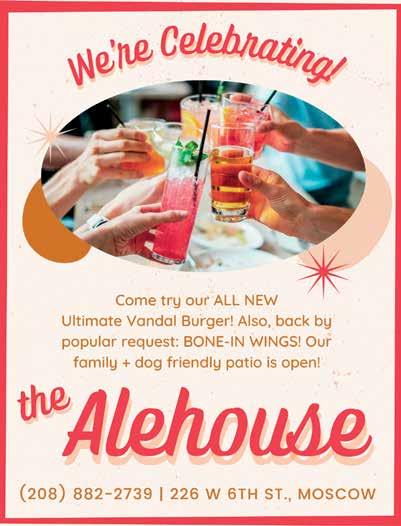
H APP Y DAY H APP Y DAYEats Eats



PIZZERIA & DELI

As I was growing up, I remember hearing from adults all around me, including my own parents, that one of the goals in parenthood is for their kids to have better lives than their own. I don’t think I ever asked anyone to define ‘better,’ though. I don’t even remember the exact conversations where I heard this comment, but if I had to guess they probably didn’t actually involve me - I was just a kid! It was probably my aunts sitting around the kitchen table as I ran through to hide from my cousins. Or maybe it was my parents chatting over coffee in the kitchen while I tried to wake up, cuddled in a blanket in the living room. Whatever the circumstances, I don’t know if they said more about wanting better for their kids or if I just made the assumption, but I grew up thinking this was a financial hope.
I figured that ‘better’ meant enough money to pay the bills without juggling. It meant savings to pay for college without loans, or at least with less. It meant vacations, being able to get wants - not just needs, and feeling comfortable financially. As I type this, it occurs to me that I might have assumed that ‘better’ was all about finances because these were my dreams. Now that I’m an adult, though, I realize that ‘better’ could mean so much more, and for my goals as a mom of three teens it definitely does.
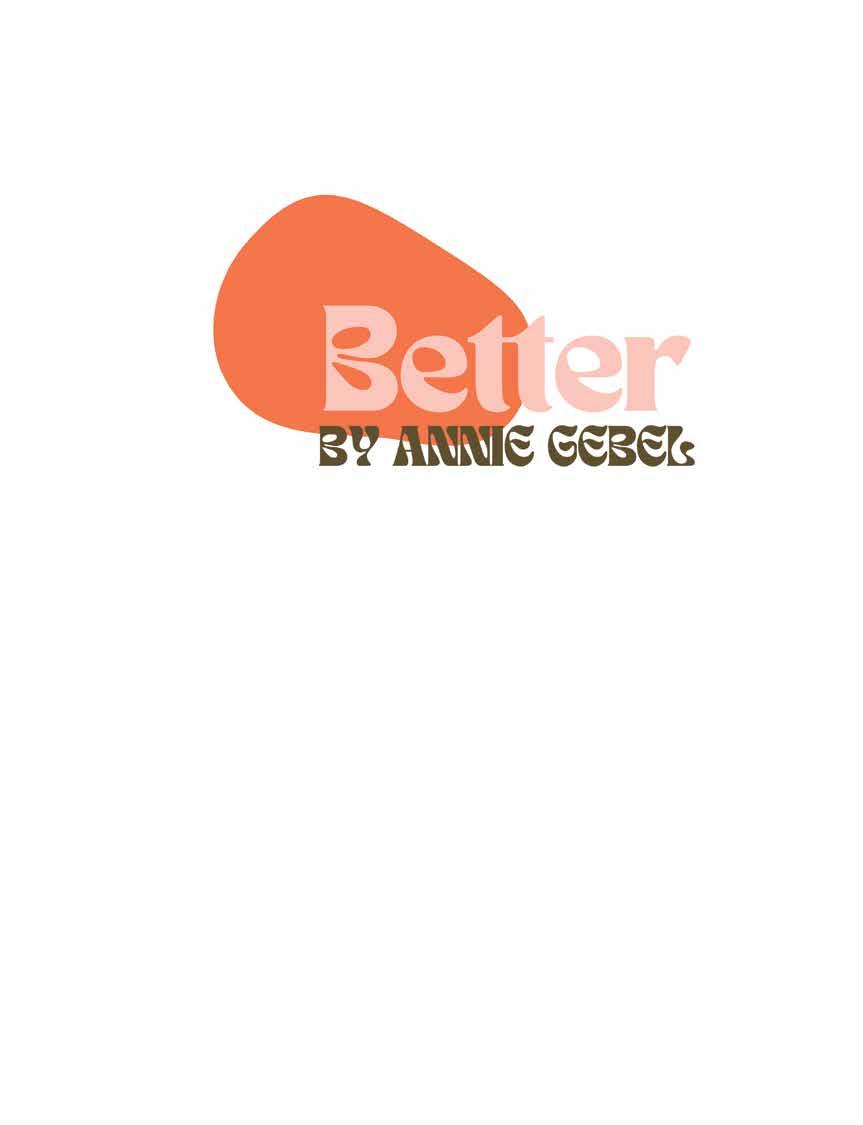
I do hope that they feel financially secure. I hope they can enjoy doing the things they want to and have some savings for the craziness in life. And I hope that if the rug gets pulled out from under them, and the savings get used up, they know they can ask for help - and they do.
Finances are a part of life, and growing up I thought they were the biggest part in a lot of ways. After all, you couldn’t just play soccer at the town park, you had to pay to be on the team. You had to pay to get the right color shirt, a pair of cleats you’d outgrow in a minute, and shin pads to protect your little legs. I wasn’t paying for this, but I was aware that my parents were. Everything was that way. Clubs had dues and fundraisers. Holidays came with expectations. There were school trips, outgrown clothes, instrument fees, and let’s not forget supporting my friends and cousins and their fundraisers too!
So, yeah, money is a thing and I do hope my kids deal with it better than I did at times. There are parts I’ve done well and definitely things I’m still learning or finessing. And I hope that they know it’s not the only thing I wish is better for them.
I mentioned that I hope they know they can ask for help and doand that applies to everything in life and is definitely part of what I’ve come to define ‘better’ as. Growing up I saw a lot of offering to help, but not a lot of asking for help. I had the impression that all the adults around me were kind and thoughtful but certainly wanted to portray the image that they had their ducks in a row, even if they didn’t have any ducks! I have to tell you that this teaching has been a tough one for me to overcome, but also one that I think I have and maybe, just maybe a little of that vulnerability has been received in the next generation. Maybe my kids know they’re not meant to hold all the hard things on their own while offering their time and energy to everyone else.

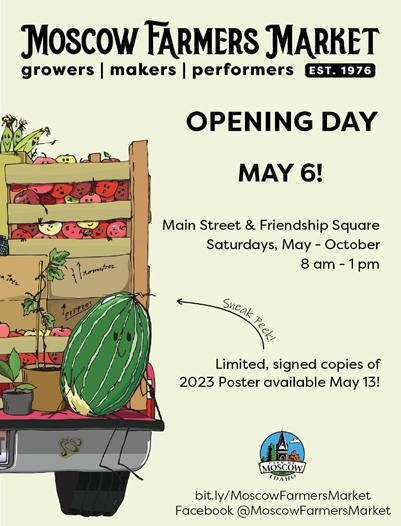
So, part of a better life for them is an honest assessment of what they can - and want to - offer others and being able to say no when that’s the answer. A yes out of obligation doesn’t qualify as better in my book. Another part of that honest assessment is knowing what they need help with, what would make their path easier and to feel okay about asking, worthy of the help, and open to the offers.
Along the lines of finding a voice to ask for help, I want for my children to be able to express their opinions, respectfully, of course, but not to be afraid to say what they want or think or feel. I want them not only to have this voice for themselves, but even before that to know their own opinions.
That may sound silly, how could you now know your own opinion about something, but have you seen Runaway Bride? Julia Roberts’ character doesn’t know how she likes her eggs. The reporter, played by Richard Gere, notices that she just orders whatever the man she’s dating at the time does. Whether because of a partner, our parents, or the culture and systems we exist within, women, especially, but often boys and girls as children, don’t have the space to express their own desires. So, they don’t. And, after a while of not saying what you want, you don’t even know what you want. We get comfortable with habitual behaviors and don’t even consider what we might actually want anymore.
I can say that this happened to me in my marriage as well. There were certain things we just always did ‘that way.’ When my marriage ended, I realized I had choices. I didn’t need to continue ‘that way’ out of habit but was free to figure out what I like, wanted, and desired on my own. (Gotta be honest - this concept blew my mind a little!) Even though, from a young age, I’d always let my kids have an opinion on certain things - the kind of yogurt they liked or what they wanted in their trail mix -as I’ve begun to see where my opinions have changed, this has become even more of a defining characteristic of a better life for them. I want them to be able to identify what they want and to reevaluate from time to time because we all change, even without life altering events like divorce.
And yes, I want them to have a voice and be able to use their voice. I want them to be able to order the side they actually do-
-want at a restaurant. I want them to be able to tell a co-worker or classmate that certain behaviors aren’t acceptable. I want them to feel like they can go up the chain if that conversation doesn’t change things. I want my kids to know what topics they’re passionate about and how to use their voices to speak out about those things. I want my kids to know that knowing what they want, asking for it, and saying no to choices that aren’t aligned are not selfish behaviors.

Being better off than the generation before isn’t an uncommon goal. It’s likely that my parents and their generation did have an idea of how they defined ‘better,’ and my goals for my kids’ better lives change as I learn and grow. I guess, though, that the current working definition is about contentment.
I wish for them to recognize that satisfaction comes not from having more money alone. Feeling like they’ve done what they can for themselves and those people and subjects they care about brings more contentment than holding back. Fear, the convenience of what’s always been, and habitual compromise may help keep the peace, but they also keep us at a level that we might think is contentment, but isn’t. It’s complacency. And, I guess, that’s the opposite of ‘better’ for me right now.
I want my kids to live life out loud. I want them to feel extreme joy and to fully feel those feelings of grief and distress when they come along too. I want them to have dreams and follow them, over and over again!

“I want my kids to live life out loud”
And, perhaps the biggest part of what ‘better’ means for me is that I want all of this to happen earlier in their lives than it is for me. I want their a-ha moments to be next week. I want their voices to be heard today.
I don’t know if my life is better than my parents, by their definition or mine, but I do know that my life is getting better each day. I’m learning to live my life out loud, with intentional choice, to say yes or no only when I mean yes or no. I’m learning that money is a thing, but it’s not the only thing. I’m learning that letting fear hold me back only keeps the peace on the surface, yet leaves me feeling ashamed for not acting authentically, and so I’m consciously living more and more authentically. I’m learning that pushing down hard emotions forces them to be stuck in me rather than letting them move through me. Every day I’m learning to live my life better. I hope my kids have better lives every day too. Better and better and better. And…all of this…it is my hope for you too. Better.
by Temple Kinyon
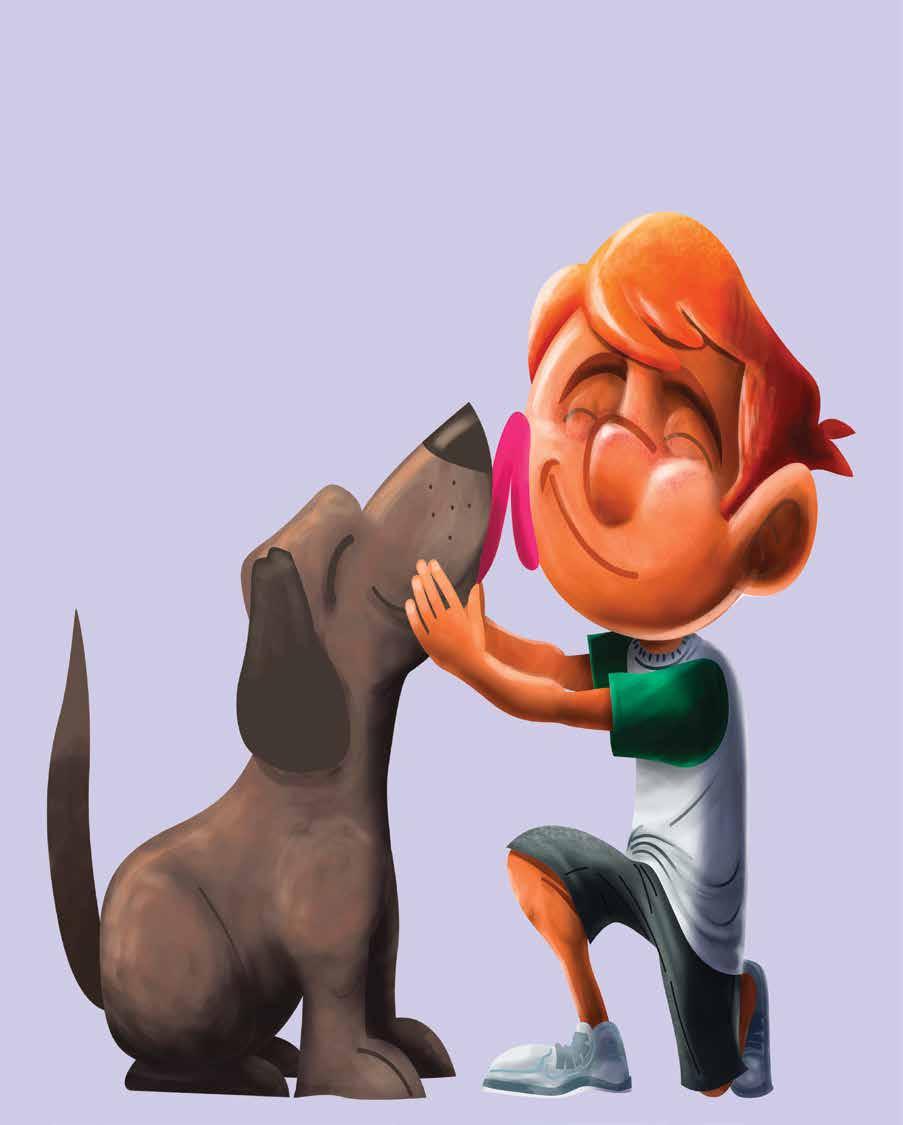
The Oh, Otis! Shenanigans
Episode 17 - The Trio
As Otis and Ed entered the large lobby area of the massive building, raucous animal noises, mainly barking dogs, filled the air and caused butterflies to swirl in Otis’s tummy.

“Ed, Otis, good to see you,” a sturdy, stout woman yelled above the din. “Please tell me you’re here to look at dogs.”
“Yep!” Otis and Ed chimed in together.
Shirley was one of the owners of The Farm, an animal rescue that serviced the entire region. The Farm wasn’t just a building or a dog shelter. It was a 20-acre spread of barns, buildings, and pastures, perfect for the menagerie of animals that came to foster in its loving and comfortable surroundings. The animal oasis boasted its own staff of vets, techs, and dozens of volunteers to manage the countless dogs, cats, horses, goats, sheep, pigs, rabbits, hamsters, llamas, reptiles, and even a peacock that graced the sanctuary’s doors. The Farm turned away no living creature, and rarely did any critters stay long; their adoption rate was high. Otis, his siblings, and his friends had all volunteered at the shelter many times.
“Thank the Lord,” Shirley laughed. “Someone brought in a litter of yellow lab puppies abandoned behind the school. They look about ten or twelve weeks old. On top of that, we have another batch of mixed puppies, including two bulldogs, that Earl Summers brought in this morning, and two six-month-old Rottweilers came in Thursday. That, on top of what we already had for dogs, has added up to some wild times here.”
“Sounds like you’ve got a wide array of pups to choose from,” Ed commented. “We’re here to get a new farm dog that will belong to both of us.” He winked at Otis.
“Yeah, when you lost Gus, I was wondering how long it would take for you two to come in,” Shirley replied. “Otis, you can go back and start looking. Suzanne and Tommy are back there someplace processing the new dogs and trying to find room. Be warned, they may ask you to help.”
Relieved not to have to discuss Gus, Otis tore off to the area where the indoor dog kennels were located while Ed stayed to visit with Shirley.
All sorts of visions conjured in Otis’s head. He was so excited to look at all the dogs and pick the perfect one. Would it be a big dog or a smaller one? Would it be a boy or a girl? Otis had never gone more than a day or two at most without spending time with Gus, so this may very well be one of the most important decisions he would ever make. He stopped abruptly in the long empty hallway that led to the kennel room, a pang of guilt suddenly hitting him like a stomach punch. He took a big breath. He missed Gus so much that it almost hurt. But suddenly, the wild yips, yaps, and barks broke through to him, and he smiled. He would get a dog that would make Gus proud. He kicked his sneakers into high gear and rounded the corner full speed into the kennel area.
Otis could hardly believe his eyes. There were dogs everywhere, roaming free. It was like a canine smorgasbord waiting for him to pick the right one. However, his focus on the menagerie blinded him to the two 50-pound open bags of puppy kibble sitting in his path. His sneaker caught the edge of one of them, and as he stumbled to catch his balance, he hit the other. Along with a wave of at least 65 pounds of the kibble, he landed on the shiny, slick cement floor sprawled out on his belly and surrounded by small pellets and puppies.
“Oh, no,” he groaned.
The entire room went silent for a fraction as the puppies registered what had happened. It clicked in their heads simultaneously, and they immediately scrambled. Their pink puppy pads slipped against the slick floor but soon caught traction. Otis froze. All he saw were dog legs, feet, tails, fur, and tongues combined in a massive mob of about twenty barking and yipping canines. He closed his eyes and braced for impact. Several mixed-breed puppies and two of the yellow labs barreled over the top of him to get to the free chuckwagon. The bulldog puppies were slower, however, because of their short legs, and they stopped to lick and slobber all over Otis’s face, neck, ears, and hair.
Otis managed to roll onto his back and tried to sit up but couldn’t with a mass of puppies jumping on his tummy, chest, head, and legs. His giggling reached hysteria to the point he couldn’t breathe. The moment he opened his mouth to suck in air, wet, slobbery tongues swiped across his lips. Otis gave up and let the wiggly, yipping, and rambunctious puppies of all sizes lick and tug at his hair, ears, cheeks, and neck and jump and waller on his chest, belly, and legs. He stared up at the ceiling and suddenly, the memory of Gus flooded his mind. His tears of laughter started to turn to quiet tears of sorrow.
A month had passed, but it was still raw. Grandpa Ed commandeered Otis to help clean the shop that day after the scurry and flurry of preparing for Spring Work. Ed and Marvel had ensured the equipment and trucks were in perfect working order to put in the Spring crop. The aftermath of tools and other shop paraphernalia lay strewn all over the interior and exterior of the big metal building. But Otis was game to help clean the shop; he loved this time of year. Warmer weather, longer days, and the smell of freshly turned field dirt meant summer was coming. That day, he’d skittered around the corner of the shop through the open cavernous garage door big enough to allow trucks, tractors, and other large equipment to park inside. Now the space stood empty, littered with end wrenches and sockets, dirty rags and grease guns, and various sizes of metal scraps and shavings scattered everywhere. Putting things back into place— because everything had a place in Ed’s shop—was the first task, followed by a sneeze-inducing and thorough sweeping.
“Hi, Grandpa!” Otis had shouted.
“Hello, Otis,” Ed replied. “Are you ready to get busy and dirty?” “Yep!” Otis emphatically stated. He’d worn his “work clothes” so he could get as dirty and greasy as he wanted.

Suddenly, a low groan came from the corner of the shop where the woodstove stood. Gus’s bed sat beside the heat source, which sat unlit today. Gus held the prestigious title of Ed and Otis’s dog. The oversized yellow lab, around 105 years old in human years, lay on his belly in his bed, pink, ham-like tongue hanging out of his mouth. He panted despite the spring temperature in the open-air shop sitting at about 55 degrees. Otis walked over, settled beside him in the bed, and began massaging the dog’s hips and shoulders. Gus groaned in appreciation and rolled lazily over on his side, a sure sign for Otis to continue with his magic hands.
Gus had been Ed and Helen’s dog long before Otis was born, but on a farm, a dog belongs to everyone. Ed had always remarked Gus didn’t actually have “his human” until he was six years old and met a wiggling three-day-old Otis for the first time. Otis received his first of a zillion slobbery kisses across his face with Gus’s loves that day. They were both hooked.

As a baby and toddler, Otis had spent hours bonding with Gus, chewing and playing with toys, sometimes the same ones. Otis had always shared his treats with Gus, even when told no. Once Otis was big enough, he’d incessantly thrown the tennis ball for Gus, taken him on adventures, bike rides, and visits to his friend’s houses—Fertis’s blue heeler, Max, Clark’s chocolate lab, Hank, and Gus were the best of pals just like their humans. Otis had also loaded Gus on the Hot Rod seat with him from time to time. They were best friends, even though Gus lived at Ed and Helen’s.
Otis leaned in close and whispered, “Hiya, Gus. How are you today?”



Gus didn’t move but looked at Otis out of the side of his eyes and responded with a low groan. Otis’s heart sank. This was not his Gus. He was always wiggly when seeing Otis, even over the past several years when his arthritis acted up, and wiggling wasn’t exactly easy for him. His tail wasn’t even twitching today. “Grandpa,” Otis asked, as a lump caught in his throat. “What’s wrong with Gus?’
Ed walked slowly over to Otis and Gus and knelt down. “Otis, he hasn’t been doing very well the last two days. I didn’t want to tell you because I knew you were busy with school, but he woke up worse than ever this morning. I think the time has come to call Dr. Paul.” He reached over with one hand and scratched Gus’s thick, cream-colored fur, and squeezed Otis’s shoulder with the other.
Otis knew Gus hadn’t been well. He looked up at Ed. He had nothing to say. Neither did Ed. Otis’s eyes welled up in tears as he watched his grandpa slowly trudge to the house where he would make that fateful call. Otis buried his head in Gus’s fur, told him all the things he loved about him— which was an exceptionally long list—and held him tight with all his might. Gus panted and groaned but placed one of his giant paws on Otis’s knee as if to say, “Thanks for loving me. I’m ready. It’s time.”
Otis wiped away his tears for Gus with the already soggy sleeve of his sweatshirt. The squeaks and yips of the puppy cluster filtered into his ears, taking him out of his sad reverie. He missed Gus more than anything, but the joy and exuberance of this moment wrapped around him in comfort, and a giggle started to form, first in his belly, then his chest, then it freed itself into the air to chime in with the bedlam from his furry compadres. The two Rottweiler puppies pulled and chewed on Otis’s jean cuffs, with little growls and whines. One of the yellow labs and two mixed breeds about the size of loaves of bread sat on his chest and belly, panting in sheer delight. They’d subdued the human. Meanwhile, the two pudgy bulldogs licked and nibbled his ears. Every time he tried to sit up, all the puppies thought it was a game and dug in harder to their goal to wrestle the human beast into submission.
All the loose dogs had been working as a pack; some ate kibble while others wrestled with Otis, and then, some eaters would take to chewing on Otis while others abandoned Otis for the kibble. Never relenting, they ate like machines and played with their new “toy” with reckless abandon.

“Oh, Otis!” Suzanne shrieked as she and Tommy came rushing into the kennel area. “We heard a huge crash, and now look! We only left for like ten seconds!” She and Tommy surveyed the situation and started laughing at the site.



***
Interested in learning Interested in learning about your baby's about your baby's ttemperament? emperament? labs.wsu.edu/infant-temperament/ instagram: @wsu.temperament.lab
“Otis, you’re an island in a sea of puppies and kibble,” Tommy chuckled.
Suzanne and Tommy lifted the puppies gobbling up kibble and placed them into an empty plastic kiddie pool to corral them, leaving the boisterous pups occupied by Otis to continue their playful and clumsy attacks on him.
“I… can’t…stop…laughing,” Otis declared as the dogs lorded over him. “I… can’t…breathe.”
“What in tarnation,” Ed’s voice flooded the room as he began whooping with laughter.
Shirley came whizzing past Ed and started grabbing puppies in both arms, muttering and shaking her head in amusement. She scurried over to the plastic pool and deposited her armload. Ed found a metal scoop and started shoveling the kibble back into the now almost-empty bags. “Oh, Otis, what did you do?”
“I…tripped…” Otis managed to spit out between fits of laughter. Ed gently reached over and picked up the lab that sat on Otis’s chest wrestling with his sweatshirt collar. “Come here, buddy; let’s give Otis a chance to breathe.” The creamy-white pup with big brown eyes snuggled into Ed’s chest and began chewing on his jacket collar. Ed gently pried open the pup’s mouth to remove the needle-sharp teeth from the clothing. He held it out at arm’s length and inspected it. “It’s a boy, Otis. He seems fond of both of us.”
The other puppies sitting on Otis lost interest and squirmed off, allowing him to finally sit up. One of the Rottweilers, one of the bulldogs, and the mixes trotted over to the plastic pools to see what was going on with their “captured” canine siblings. The other Rottweiler draped itself over Otis’s stretched out legs and continued gnawing on the edge of his jeans.
Otis snatched the slower bulldog and hoisted her to his lap. “This one is a girl, Grandpa, and I know she likes me. Look at my hair.” A damp patch of curls and a shiny wet ear showed evidence of the puppy’s love. He scratched her soft black and white speckled ears. She was pudgy, her pink belly looking like she’d swallowed a grapefruit. Her bright white fur boasted a few black spots, most distinctly, one on her back shaped like a heart.
Ed placed the lab onto Otis’s lap beside the bulldog and Rottweiler, and the three dogs immediately started chewing on and nuzzling each other but managed to stay seated on Otis. “Hold on to them while I help pick up the disaster you created,” Ed winked at Otis and returned to scooping the food into the bags.
Once Ed, Suzanne, Tommy, and Shirley had the food and most of the puppies deposited in their respective places, Otis swept the floor. He let the Rottweiler, lab, and bulldog he’d been holding wander around, and two of the mixed breeds joined them. They played with each other, growling and bopping each other with their big, clumsy paws. Anytime one of them tinkled, Otis immediately cleaned up the mess without anyone asking. His love for dogs knew few, if any, limits.
“Oh, Otis,” Ed beamed, “that’s the most I’ve seen you smile and laugh in a month. What do you think about taking one of these little furballs home with us?”
As much as he loved and missed Gus, Otis was thrilled to select a new fur best friend to share with his human best friend. ***
-slammed the door shut. Helen spied Otis getting out of the pickup on the passenger side and heard him talking sweetly. He was doing something on the floorboard of the pickup, out of sight from her.
“What is he doing, Ed?” Helen asked.
“Just give him a second,” Ed smiled. “He wants everything perfect for introductions.”
Otis popped his head around the corner of the pickup. “Hey Grandma, close your eyes, and you’ll get a big surprise.”
Helen laughed but obliged by shutting her eyes. She heard Otis crunching on the gravel, walking from the pickup to in front of her. Then she sensed a commotion happening on the ground at her feet.
“Ok, Grandma,” Otis announced. “Open your eyes.”
Helen opened her eyes and blinked a few times to register what she saw.
“Oh, Otis!” she exclaimed in shock. “Two?”
“Yeah!” Otis breathed. “I wanted the Rottweiler, and Grandpa Ed thought you’d like a bulldog around the house. He said you had one when you were a kid.”
She bent down, and the two puppies began jumping on her, kissing her face, and demanding attention. “But two?” The pups continued to shower her with their affection. “Oh, Otis and Ed,” she managed as a few tears started to trickle down her cheeks.
“I…I guess two dogs is ok. And yes, Otis, I did have a bulldog growing up. Having one around the house would be splendid.”
“Grandpa and I named our dog Zeus,” Otis bent down next to Helen and scratched the Rottweiler. “I thought of a name for your bulldog, but Grandpa said you should decide.”
Helen watched the two spirited dogs a moment, then asked, “Otis, what’s the name you picked for the bulldog?”
“Zoinks!” he belted out proudly.
Helen looked at Otis and saw the delight on his face. He’d suffered through his first real loss with Gus but now was happier than she’d seen him since. His cheeks were flush with excitement and sparkles danced in his eyes. She smiled. “Zoinks it is.”
She and Otis stood and embraced.
Meanwhile, Ed sauntered over to his pickup and placed his hand of the driver’s side door.
“Ed, where are you going?” Helen asked as she stood with her arm across Otis’s shoulders.
Ed turned to face her, and with an impish grin, opened the door of his pickup. Out bounded one of the yellow labs, who sped over to Zeus and Zoiks and the three tumbled into a mass of legs, feet, tails, and high-pitched whines of reunion, even though it’d only been a matter of minutes since they’d been crammed together in the pickup cab with their humans.
Helen stood speechless, looking at Ed for an explanation. Her expression conveyed her question of why going to select one dog had turned into bringing home three.
A grin spread over Ed’s face, and he ignored the unspoken question. “Helen, meet Boyd.”
Grandma Helen saw Ed’s truck rambling down the driveway and walked outside to greet him and Otis. She was anxious to see the dog they had chosen to co-own. Ed pulled up, shut off the engine, and grinned at her as he piled out of the pickup and-
If you’re struggling with sleep disorders like insomnia, restless leg syndrome, or sleep apnea, Dr. Usha Nandhini, Sleep Medicine Specialist, can help.

• Obstructive sleep apnea
• Central sleep apnea complicating congestive heart failure
• Insomnia in children and adults
• Restless leg syndrome
• Movement disorders of sleep
• Narcolepsy
• Circadian rhythm disorders
• Shiftwork disorders

Talk to your doctor about a referral to Dr. Usha Nandhini.
“I sincerely believe good health begins largely with good sleep. I am passionate about educating individuals on the importance of quality sleep as a prerequisite for a healthy life and eager to treat sleep disorders to help them achieve their optimal health.”
WE BELIEVE home really is sweet. /// iccu.com Build it. Buy it. Better it.
Equal Housing Lender. Whether building, buying, or moving up, Idaho Central Credit Union has the home loan to fit your needs. *Based on 2022 Idaho county data.
Fast approvals and closings
Special first-time homebuyer loans
No-fee and low-cost loan options
IHFA, FHA, VA, & Rural Housing loans
Construction loans available
#1 Mortgage lender in Idaho
LOANS FOR THE WAY YOU HOME
•
•
•
•
•
•
children
adults At Your Service
Palouse Sleep Medicine for
and
Palouse Sleep Medicine 825 SE Bishop Blvd. Ste.
Pullman,
(509)
pullmanregional.org/sleep-medicine
201
WA
338-6000
Dr. Usha Nandhini








































































 by JacquelinE Cruver
by JacquelinE Cruver







 Pfc. Floyd W Hicks and wife Zelma, taken March 27, 1943 Long Beach CA - two days before leaving for the Army
Pfc. Floyd W Hicks and wife Zelma, taken March 27, 1943 Long Beach CA - two days before leaving for the Army
 LCHS Photo 30-17-013 - Soldiers marching in a parade down Moscow’s Main Street
LCHS Photo 30-17-013 - Soldiers marching in a parade down Moscow’s Main Street












 LCHS Photo 30-17-035 – WWII draft registration at the University of Idaho
LCHS Photo 30-17-035 – WWII draft registration at the University of Idaho





































